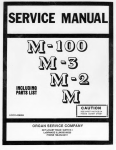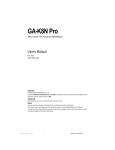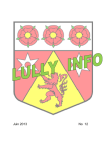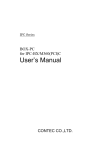Download Acer Veriton 5900 Technical information
Transcript
Veriton 7900Pro/6900Pro/5900Pro
Service Guide
Service guide files and updates are available
on the AIPG/CSD web; for more information,
please refer to http://csd.acer.com.tw
PRINTED IN TAIWAN
Revision History
Please refer to the table below for the updates made on Verition 7900Pro/6900Pro/5900Pro service guide.
Date
II
Chapter
Updates
Copyright
Copyright © 2006 by Acer Incorporated. All rights reserved. No part of this publication may be reproduced,
transmitted, transcribed, stored in a retrieval system, or translated into any language or computer language, in
any form or by any means, electronic, mechanical, magnetic, optical, chemical, manual or otherwise, without
the prior written permission of Acer Incorporated.
III
Disclaimer
The information in this guide is subject to change without notice.
Acer Incorporated makes no representations or warranties, either expressed or implied, with respect to the
contents hereof and specifically disclaims any warranties of merchantability or fitness for any particular
purpose. Any Acer Incorporated software described in this manual is sold or licensed "as is". Should the
programs prove defective following their purchase, the buyer (and not Acer Incorporated, its distributor, or its
dealer) assumes the entire cost of all necessary servicing, repair, and any incidental or consequential
damages resulting from any defect in the software.
Acer is a registered trademark of Acer Corporation.
Intel is a registered trademark of Intel Corporation.
Other brand and product names are trademarks and/or registered trademarks of their respective holders.
IV
Conventions
The following conventions are used in this manual:
Screen messages
Denotes actual messages that appear
on screen.
NOTE
Gives bits and pieces of additional
information related to the current
topic.
WARNING
Alerts you to any damage that might
result from doing or not doing specific
actions.
CAUTION
Gives precautionary measures to
avoid possible hardware or software
problems.
IMPORTANT
Reminds you to do specific actions
relevant to the accomplishment of
procedures.
V
Preface
Before using this information and the product it supports, please read the following general information.
VI
1.
This Service Guide provides you with all technical information relating to the BASIC CONFIGURATION
decided for Acer's "global" product offering. To better fit local market requirements and enhance product
competitiveness, your regional office MAY have decided to extend the functionality of a machine (e.g.
add-on card, modem, or extra memory capability). These LOCALIZED FEATURES will NOT be covered
in this generic service guide. In such cases, please contact your regional offices or the responsible
personnel/channel to provide you with further technical details.
2.
Please note WHEN ORDERING FRU PARTS, that you should check the most up-to-date information
available on your regional web or channel. If, for whatever reason, a part number change is made, it will
not be noted in the printed Service Guide. For ACER-AUTHORIZED SERVICE PROVIDERS, your Acer
office may have a DIFFERENT part number code to those given in the FRU list of this printed Service
Guide. You MUST use the list provided by your regional Acer office to order FRU parts for repair and
service of customer machines.
Chapter 1
System Specifications
Overview
Acer Verition 7900Pro/6900Pro/5900Pro are bussiness-ready desktop PCs built with latest high-performance
technology for managing demanding workload. The series of products are standalone or network-ready for
SMB. They include video and audio features for business multimedia.
Veriton 7900Pro/6900Pro/5900Pro comply with all requirements of Intel vProTM platform. The series of
products support Conroe CPU and employ Intel ICH8-DO and Nineveh LAN controller (82566DM).
Chapter 1
1
Features
CPU
T
Socket Type : Intel (R) Socket T LGA 775 pin
T
Intel (R) CedarMill/Prester/Conroe FSB 533/800/1066 MHz
T
L2 Cache varies with CPU
T
Northbridge: Intel (R) Q965
T
Southbridge: Intel (R) ICH8DO
T
Socket Type : DDR II so-DIMM,1.8 Voltage
T
Socket Quantity : 4
T
Capacity support : 256MB ~ 2GB Unbuffered ECC SDRAM module, support dual channel
T
Support Memory Speed : DDR II 800/667/533 MHz
Chipset
Memory
On-Board Graphic Solution
T
Intel Broadwater-G on die graphic solution
T
DVMT technology support
T
Dual View function support (by Intel ADD2/ADD2+)
T
1 VGA port on rear side (co-lay for DVI-I required for Vista premium)
PCI Express/PCI Slot
T
Slot Type: PCI Express X16
T
Slot Quantity: 1
T
Slot Type: PCI Express X1
T
Slot Quantity: 1
T
Slot Type: PCI 2.3 slot
T
Slot Quantity: 2
SATA IDE
2
T
Slot Type: SATA IDE slot
T
Slot Quantity : 6
T
Storage Type Support : HDD/CD-ROM/DVD-ROM/DVD-RW/DVD+RW/DVD Dual/DVD
SuperMultiPlus
Chapter 1
Audio
T
Codec : Realtek ALC888
T
Compliant with Microsoft’s UAA (Universal Audio Architecture) support (rear only)
T
7.1+2 Channel Audio Support (ALC833 codec series provide 10 DAC channels that
simultaneously suppport 7.1 soud playback, plus 2 channels of independent stereo sound output
through the front panel stereo output).
T
16/20/24 bit S/PDIF-OUT supports 44.1K/48K/96K/192KHz sample rate; 16/20/24bit S/PDIF-IN
supports 44.1K/48K/96KHz sample rate
T
Reserved disable function on BIOS side. Default is enabled.
T
Controller : PCI-E Giga LAN chip with manageability function
T
LAN Chip : Intel(R) Nineveh 82566DM
T
Reserved disable functionon BISO side. Default is enabled. (Intel (R) Nineveh LAN doesn’t
support LAN disable function via HW GPIO)
T
Should be worked under 10/100/1000 Mbs environment
T
Controller : Intel (R) ICH8DO
T
Connectors Quantity : 10
T
On-board (for non-1394 SKU): 10 ports, 4 for front daughter board, 4 for rear I/O (2 co-lay with rear
I/O, under RJ45 port), 2 reserved header
T
USB 2.0/1.1
LAN
USB
System LED Definition
T
T
T
Power state LED
T
S0: Blue Steady
T
S1/S3: Blue Blinking
T
S4/S5: Off
Storage state LED
T
IDE active: Blue Blinking
T
IDE idle: Off
LAN state LED
T
LAN active: Blue Blinking
T
LAN idle: Off
On-Board Connector
T
Chapter 1
Rear I/O Connectors
T
1 PS/2 Keyboard port
T
1 PS/2 Mouse port
T
1 Parallel port
T
1 Serial port
T
1 VGA (CRT) port (or DVI-I for Vista Premium SKU)
T
1 RJ45 LAN port
T
4 USB ports
3
T
T
4
7.1 channel phone jack (6 audio jacks, with MIC in, Line-in definition)
On-Board Connectos
T
1 CPU Socket
T
4 DDR2 Memory Socket
T
1 PCIE x16 slot
T
1PCIE x1 slot
T
2 PCI slots
T
1FDD slot
T
6 SATA2 IDE connectors
T
3 2*5 pin Intel FPIO specification USB pin connectors (follow Intel (R) FPIO standard
specification)
T
1 2*5 pin Intel (R) FPIO spec. Microphone In/Headphone Out pin connectors
T
1 serial prot 2*5 pin connector (2nd serial port)
T
1Aux-in 4 pin connector
T
14 pin CPU fan connector
T
13 pin system FAN connector with linear circuit
T
12 pin Intrusion Alam connector
T
1 24 pin+4pin ATX interface PS3/PS2 SPS connector
T
1 2*7 pin front panel IO header
T
2 reserved 2 pin GPIO connector
T
2 reserved USB header
T
1 on board buzzer
T
1 2-pin OBR header
T
1 2*5 pin connector (2nd serial port)
Chapter 1
System Block Diagram
Cedar Mill, Presler ,
Conroe & Allendale
LGA775 Processor
VRD 11
4 Phase PWM
Socket T
1066/800/533 FSB
CK-505 Clock
Intel ADD2/+ Card
or
PCI Express x 16
External Graphics
Card
PCI Express x16 Port
DDR2 533/667/800
Channel A DDR2
DIMM1
DIMM2
GMCH
VGA Connector
DDR2 533/667/800
Channel B DDR2
DIMM1
Broadwater
DIMM2
Back Panel
PCI Express x1 port
USB2.0 Port 0
4 Lanes
USB2.0 Port 1
USB2.0 Port 2
LAN NINEVEH LAN
Direct Media Interface (DMI)
Controller Link
USB2.0 Port 3
SPI Flash
(BIOS)
Back Panel
1394a Port 1
TI43AB23
PCI I/F
PCI Slot 1
PCI Slot 2
ICH8
PCI Express x1 port
Front Panel
PCI Express x1
1394a Port 2
Slot 1
Header
USB2.0 Port 4
Serial ATA Ş
LPC I/F
USB2.0 Port 5
USB2.0 Port 6
SATA Connector 1
AHCI, RAID0,1,5,10
SATA Connector 2
SATA Connector 3
USB2.0 Port 7
SATA Connector 4
USB2.0 Port 8
SATA Connector 5
USB2.0 Port 9
ESATA Connector 6
Super I/O
LPC I/F
Firmware HUB
HDA Codec
Realtek ALC888
ITE8718
Serial/LPT/KB/MS
Floppy
Drive Connector
Chapter 1
5
Main Board Layout
6
1
CPU_FAN1
CPU fan header
24
BIOS_SEL1
SPI & FWH BIOS select
2
COM2
COM Header 2
25
PWR2
4 pin power connector
3
J11
Acer special requirement
26
KB/MS1
Keyboard & Mouse PS2 port
4
J10
Acer special requirement
27
COM1
COM port
5
PWR1
24 pin power connector
28
PRT
Printer port
6
FLOPPY1
Floppy connector 1
29
VGA
VGA port
7
SYS_FAN1_1
System fan header 1_1(3
pin)
30
1394_USB1
1394 and USB*2 ports
8
CLR_CMOS
Clear CMOS
31
NIC_USB
Lan and USB*2 port
9
OBR
One Button Recovery
32
Audio
Audio port
10
INTR1
Chassis Intruder
33
PCI-E1
PCI-Express X16 connector
11
FP1
Front Panel Switch/LED
34
BAT1
Battery connector
12
TPM
Trusted Platform Module
Interface
35
PCI-E2
PCI-Express X1 connector
Chapter 1
13
SATA_5
SATA data transfer
connector 5
36
F_1394
Front 1394 header
14
SATA_6
SATA data transfer
connector 6
37
PCI1, PCI2
PCI connector
15
SATA_3
SATA data transfer
connector 3
38
U25
FWH BIOS socket
16
SATA_4
SATA data transfer
connector 4
39
U19
ICH8 series south bridge
17
SATA_1
SATA data transfer
connector 1
40
U13
965 series nouth bridge
18
SATA_2
SATA data transfer
connector 2
41
U10
LGA775 CPU socket
19
F_USB3
Front panel USB header 3
42
DIMM1,DIMM2,DIM
M3,DIMM4
DDR2 memory connector
20
F_USB2
Front panel USB header 2
43
IR
Infrared function header
21
F_USB1
Front panel USB header 1‘
44
FLOPPY1
Floopy connector
22
F_AUDIO1
Front panel Audio header
45
BUZ1
Buzzer
23
AUX_IN
Audio Aux input
Chapter 1
7
Your Acer Desktop tour
After knowing your computer features, let us show you around your new Veriton series computer.
Front panel
Veriton 5900Pro front view
Veriton 6900Pro front view
8
Chapter 1
Veriton 7900Pro front view
Icon
Component
Icon
Component
Icon
Component
Icon
Component
Veriton
5900Pro
Veriton 6900Pro/
7900Pro
1
1
5.25” drive bay(s)
2
2
3.5 floppy drive
3
3
Microphone-in jack
(front)
Accepts input from external microphones.
4
4
Speaker-out/line-out
port
Connects to audio line-out devices (e.g.,
speakers).
5
5
USB ports
Connect to USB 2.0 devices (e.g., USB
mouse, USB camera).
6
7
8
Component
Description
Hardware reset button
Note:
"Connecting peripherals" on page 14
"Connecting
6
Indicators
options" on page 19
7
Power
Power on or off the system.
Note:
"Connecting
peripherals" on
pagebutton
14
"Connecting
options" on1page 19
2
Chapter 1
Icon
Optical disk drive (for
selected models)
Accepts CDs or DVDs.
Eject button
Ejects optical disks.
9
3
Power button
Icon
4
Icon
Component
5
Icon
Power on or off the system.
Component
Hard disk drive
indicator
Icon
Component
Lights to indicate hard disk drive status.
Optical disk drive
Component
indicator
6
LAN indicator
7
USB ports
8
Microophone-in jack
(front)
9
Headphone/Speakerout/line-out port
10/11
Line-in jack
Lights to Indicate optical disk drive status.
Press to enable/disable Wireless function.
Lights to indicate the status of wireless
LAN communications.
Accepts audio line-in devices (e.g., audio
CD player, stereo walkman).
Note:
"Connecting peripherals" on page 14
options" on page 19
Note:
"Connecting peripherals" on page 14
options" on page 19
10
"Connecting
"Connecting
Chapter 1
Rear panel
Veriton 5900Pro rear view
Veriton 6900Pro rear view
Chapter 1
11
Veriton 7900Pro rear view
#
1
2
3
4
Icon
Icon
Icon
Icon
Icon
Component
Component
Power supply
Description
Veriton
5900Pro/6900Pro/7900Pro
Power coard socket
Connects Veriton
to a power cord.
Component
5900Pro/6900Pro/7900Pro
Voltage selector switch
Veriton
Component
5900Pro/6900Pro/7900Pro
PS/2 mouse port
Accepts input
from PS/2 mouses.
Component
Veriton
5900Pro/6900Pro/7900Pro
5
PS/2 keyboard port
Accepts input from PS/2 keyboards.
6
Serial port
Connects to a serial device (e.g., external
serial mouse or keyboard).
7
Parallel/printer port
Connects to a parallel device (e.g., printer).
8
CRT/LCD monitor port
Connects to a display device (e.g., external
monitor, LCD projector).
9
USB ports
Connect to USB 2.0 devices (e.g., USB
mouse, USB camera).
10
12
Chapter 1
11
12
13
14
1
Ventilation slots
Enable the computer to stay cool, even
after prolonged use.
Note: Do not cover or obstruct the opening
of the fan.
2
USB ports
3
DVI por
4
Icon
Component
CRT/LCD monitor port
5
Icon
Icon
Component
Supports digital video connections.
DC-in jack
Icon
Component
OBR (One Button
Recovery) button
7
Network port
Icon
Component
Connects to an AC adapter.
6
Component
Icon
Lights to indicate the status of wireless
LAN communications.
Component
8
Mic-in jack
9
Line-out jack
10/11
Accepts input from external microphones.
Kensington lock
Connects to a Kensington-compatible
security
lock. 14
Note:
"Connectingcomputer
peripherals"
on page
"Connecting
options" on page 19
Note:
"Connecting peripherals" on page 14
options" on page 19
"Connecting
Audio Jack Function Table
Color/Use
Headphone
Blue
Line-in
Note:
"Connecting peripherals" on page 14
Green
Headphone
options" on page 19
Pink
N/A
1.1 CH
3.1 CH
5.1 CH
7.1 CH
Line-in
"Connecting
Line-out
Line-in
Line-in
Line-in
Front
Front
Front
Mic-in
Mic-in
Mic-in
Mic-in
N/A
N/A
N/A
Rear
Rear
Black
N/A
N/A
Center & woofer
Center & woofer
Center & woofer
Gray
N/A
N/A
N/A
N/A
Side
Orange
Chapter 1
13
System Peripherals
The Aspire T630 and AcerPower F3 computer consist of the system itself, and system peripherals, like a
mouse, keyboard and a set of speakers (optional). This section provides a brief description of the basic
system peripherals.
Mouse (PS/2 or USB, manufacturing option)
The included mouse is a standard two-button wheel mouse. Connect the mouse to the PS/2 mouse port or
USB port on the back panel of the system.
Keyboard (PS/2 or USB, manufacturing option)
Connect the keyboard to the PS/2 keyboard port or USB port on the back panel of the system.
Speakers
Note:
For systems bundled with speakers, before powering on the system, connect the speaker cable to the audio
out (external speaker) port on the back panel of the system.
For more detailed information about the speakers, please refer to the included operating instructions.
NOTE: speakers are optional and the appearance might be different depending on the actual product.
14
Chapter 1
Acer Empowering Technology
Acer’s innovative Empowering Technology makes it easy for you to access frequently used functions and
manage your new Acer notebook. It features the following handy utilities:
•
•
•
•
•
•
•
Acer eSettings Management accesses system information and adjusts settings easily.
Acer eLock Management (for slected models) limits access to external storage media.
Acer eDataSecurity Management protects data with passwords and advanced encryption algorithms.
Acer ePerformance Management improves system performance by optimizing disk space, memory and
registry settings.
Acer eAcoustics Management offers a useful tool to balance your computing power needs with your
desired level of quietness.
Acer eRecovery Management backs up and recovers data flexibly, reliably and completely.
Acer eProtection Management provides exceptional protection against viruses and other malware.
For more information, press the <
> key to launch the Empowering Technology menu, then click on the
appropriate utility and select the Help or Tutorial function.
Empowering Technology password
Before using Acer eLock Management and Acer eRecovery Management, you must initalize the Empowering
Technology password. Right-click on the Empowering Technology toolbard and select “Password Setup” to do
so. If you do not initialize the Empowering Technology password, you will be prompted to do so when running
Acer eLock Management or Acer eRecovery Management for the first time.
Acer eSettings Management
Acer eSettings Management allows you to inspect hardware specifications, change BIOS passwords or other
Windows settings, and to monitor the system health status.
Acer eSettings Management also:
•
•
Provides a simple graphical user interface for navigating.
Displays general system status and advanced monitoring for power users on Acer computer.
Chapter 1
15
Acer eLock Management
Acer eLock Management is a security utility that allows you to lock your removable data, optical and floppy
drives to ensure that data can’t be stolen while your notebook is unattended.
•
•
•
•
Removable data devices - includes USB disk drives, USB pen drives, USB flash drives, USB MP3 drives,
USB memory card readers, IEEE 1394 disk drives and any other removable disk drives that can be
mounted as a file system when plugged into the system.
Optical drive deivces - includes any kind of CD-ROM or DVD-ROM drives.
Floppy disk drives - 3.5-inch disks only.
Interfaces - includes serial ports, parallel port, infrared (IR), and Bletooth.
To activate Acer eLock Management, a password must be set first. Once set, you can apply locks to any of the
devices. Lock(s) will immediately be set without any reboot necessary, and will remain locked after rebooting,
until unlocked.
NOTE: If you lose your password, there is no method to reset it except by reformatting your notebook or taking
your notebook to anAcer Customer Serivce Center. Be sure to remember or write down your password.
16
Chapter 1
Acer eDataSecurity Management
Acer eDataSecurity Management is handy file encryption utility that protexts your files from being accessed by
unauthorized persons. It is conveniently integrated with Windows explorer as a shell extension for quick and
easy data encryption/decryption and also supports on-the-fly file encryption for MSN Messager and Microsoft
Outlook.
The Acer eDataSecurity Management setup wizard will prompt you for a suvervisor password and default
encryption. This encryption will be used to encrypt files by default, or you can choose to enter your won filespecific password when encrypting a file.
NOTE: The password used encrypt a file is the unique key that the system needs to decrypt it. If you lose the
password, the supervisor password is the only other key capable of decrypting the file. If you lose both
passwords, there will be no way to decrypt your encryped file! Be sure to safeguard all related
passwords!
Chapter 1
17
18
Chapter 1
Acer ePerformance Management
Acer ePerformance Management is a system optimization tool that boosts the performance of your Acer
notebook. It provides and express optimization method to release unused memory and disk space quickly.
The user can also enable advanced options for full control over the following option:
•
•
•
Memory optimization - releases unused memory and check usage.
Disk optimization - removes unneeded items and files.
Speed optimization - improves the usability and performance of your Windows XP system.
Acer eAcoustics Management
Acer eAcoustics Management offers you a useful tool to balance your computing power needs with your
desired level of quietness. By reducing the processor speed for tasks that require less processing, the CPU
and system fans can run slower, thus reducing the amount of sound generated by tehse components.
Using Acer eAcoustics Management
To launch Acer eAcoustics Management
•
•
Click on the Acer eAcoustics Management icon in the Empowering Technology toolbard shown on your
desktop.
From the Start menu, go to (All) Programs>Acer Empowering Technology>Acer eAcoustics
Management.
Chapter 1
19
This will open Acer eAcoustics Management main page.
Acer eAcoustics Management Main Page
Listed on the main page are two options for Acer eAcoustics Management, labeled as Quiet and Professional.
Select the mode that suits your working requirements best, and exit the utility to apply the settings.
Quiet
Use this mode for tasks that require low processing power, like word processing, Web browsing, and instant
messaging. This mode creates the lowest audio disturbance.
Professional Mode
Use this mode for processing-intensive tasks, when you require full-speed operation.
Acer eRecovery Management
Acer eRecovery Management is a powerful utility that does away with the need for recovery disks provided by
the manufacturer. The Acer eRecovery Management utility occupies space in a hidden partition on your
system’s HDD. User-created backups are stored on D:\ drive. Acer eRecovery Management provides you
with:
•
•
•
20
Password protection.
Recovery of applications and drivers.
Image/data backup:
T
Back up to HDD (set recovery point).
T
Back up to CD/DVD.
Chapter 1
•
Image/data recovery tools:
T
Recover from a hidden partition (factory defaults).
T
Recover from the HDD (most recent user-defined recovery point).
T
Recover from CD/DVD.
For more information, please refer to “Acer eRecovery Management”
NOTE: If your computer did not come with a Recovery CD or System CD, please use Acer eRecovery
Management’s “System backup to optical disk” feature to burn a backup image to CD or DVD. To
ensure the best results when recovering your system using a CD or Acer eRecovery Management,
detach all peripherals (except the external Acer ODD, if your computer has one), including your Acer
ezDock.
Chapter 1
21
Hardware Specifications and Configurations
System Board Major Chip
Item
Specification
System Core Logic
North bridge: Intel (R) Q965
South bridge: Intel (R) ICH8DO
Super I/O Controller
ITE IT8718DX
LAN Controller
Intel (R) 82566DM
Memory Controller
Built-in north bridge: Intel Q965
SATA Controller
Built-in ICH8DO
1394 Controller
TI TSB43AB23PDTG4
Audio Controller
Realtek ALC888
VGA Controller
Built-in Intel (R) Q965 (GMCH)
Keyboard Controller
ITE IT8718DX
Processor
Item
Specification
Type
Supports AMD mobile Athlon 64 (62W) M2
Slot
Socket 940
Speed
Depends on CPU, which is local configured
Bus Frequency
533/800/1066 MHz
Voltage
Processor voltage can be detected by any system without
setting any jumper
Supports AMD Sempron-D (62W) M2
BIOS
Item
BIOS code programmer
Specification
Award
BIOS version
22
BIOS ROM size
4MB
BIOS ROM package
32-pin PLCC package
Support protocol
PCIX 1.0,PCI 2.2,APM 1.2,VESA/DPMS (VBE/PM V1.1),
SMBIOS 2.3, E-IDE 1.1, ACPI 1.0b,ESCD1.03, PnP 1.0a,
Bootable CD-ROM 1.0, USB 1.1~ USB 2.0, UHCI 1.0, ANSI
ATA 3.0 ATAPI
Boot from CD-ROM feature
Yes
Support to LS-120 drive
Yes
Support to BIOS boot block feature
Yes
BIOS Password Control
Yes
Chapter 1
BIOS Hotkey List
Hotkey
Function
Description
Enter BIOS Setup Utility
c
Press while the system is booting to
enter BIOS Setup Utility.
System Memory
Item
Specification
Memory Slot Number
4 Slots
Supported Memory Size per Slot
256 MB ~ 1GB
Supported Maximum Memory Size
4GB
Supported Memory Speed
533/667/800 MHz
Supported memory voltage
1.8V
Support memory module package
240-pin DIMM
Support to parity check feature
Yes
Support to Error Correction Code (ECC)
feature
Yes
Memory module combinations
You can install memory modules in any combination as
long as they match the above specifications.
Cache Memory
Item
Specification
First-Level Cache Configurations
Cache function control
Enable/Disable by BIOS Setup
Second-Level Cache Configurations
The information below is only applicable to system installed with a Pentium 4 processor
Tag RAM Location
On Processor
L2 Cache RAM Location
On Processor
L2 Cache RAM type
PBSRAM (Pipelined-burst Synchronous RAM)
L2 Cache RAM size
Depends on CPU, which is local configured
L2 Cache RAM speed
Full of the processor core clock frequency (Advanced Transfer Cache)
L2 Cache function control
Enable/Disable by BIOS Setup
L2 Cache scheme
Fixed in write-back
LAN Interface
Item
Specification
LAN Controller
Intel (R) Nineveh 82566DM
LAN Controller Resident Bus
PCI Express Bus
LAN Port
ONE RJ-45 on board
Function Control
Enable/Disable by BIOS Setup
Chapter 1
23
IDE Interface
Item
Specification
IDE Controller
Built-in nVidia MCP51
IDE Controller Resident Bus
PCI bus
Number 40 pin PATA slot
1
T
Device Type Support
HDD, CD-ROM, CD-RW, DVD-ROM,Combo,DVD burner
T
Transfer Rate Support
PIO 0/1/2/3/4
T
ATA Mode
33/66/100
Number STAT IDE slot
4
Device Type Support
T
HDD,CD-ROM,CD-RW,DVD-ROM,DVD-RW,DVD+RW,DVD
Dual,DVD Supermultiplus
Supports LS-120
Yes
Supports bootable CD-ROM
Yes
Function Control
Enable/Disable by BIOS setup
Serial Port (No serial port for this model)
Item
Specification
Serial port controller
LPC47M182
Serial port controller resident bus
LPC Bus
Number of serial port
1
Serial port location
Rear panel
16550 UART support
Yes
Connector type
9-pin D-type female connector
USB Port
Item
Specification
Universal HCI
USB 2.0/1.1
Controller
Built-in nVidia MCP51
Number of the connectors
8
Location
Rear : 4
Front : 4
USB Class
Support legacy keyboard for legacy mode
Wake-up Event Specifications
Device
24
S1
S3
S4
S5
Power Button
Enabled
Enabled
Enabled
Enabled
PS2 Keyboard
Disabled
Disabled
Disabled
Disabled
USB Keyboard
Disabled
Disabled
N/A
N/A
PME
Disabled
Disabled
Disabled
Disabled
WOR (wake on Ring)
Disabled
Disabled
Disabled
Disabled
RTC (real time clock)
Disabled
Disabled
Disabled
Disabled
Chapter 1
Thermal Design
Item
Description
Thermal Design
T
Provision for optional secondary fan
T
Adequate venting in the front of chassis
T
Adequate venting in the rear of chassis
Memory Address Map
Address
Size
Function
0000000 - 009FFFF
640 KB System Memory
Onboard DRAM
00A0000-00BFFFF
128 KB Video RAM
Reserved for Graphics Display
Buffer
Non-Cacheable
00C0000-00CFFFF
32 KB I/O Expansion ROM
Reserved for ROM on I/O
Adapters
00D0000-00D3FFF
16 KB I/O Expansion ROM
Reserved for ROM on I/O
Adapters
00D4000-00D7FFF
16 KB I/O Expansion ROM
Reserved for ROM on I/O
Adapters
00D8000-00DBFFF
16 KB I/O Expansion ROM
Reserved for ROM on I/O
Adapters
00DC000-00DFFFF
16 KB I/O Expansion ROM
Reserved for ROM on I/O
Adapters
00E0000-00E7FFF
32 KB for SCSI BIOS
Reserved for SCSI BIOS
00E8000-00EFFFF
32 KB
Reserved Onboard
00F0000-00FFFFF
64 KB BIOS
System ROM BIOS (ROM)
System RAM BIOS (DRAM)
0100000-0F9FFFF
System Memory
Onboard DRAM
0FA0000-0FFFFFF
384 KB I/O Card Memory
Reserved for Memory Map
I/O Card
Non-Cacheable
1000000-FFFFFFF
System Memory
Onboard DRAM
PCI INTx# and IDSEL Assignment Map
PCI INTx #
INTA#
PCI Devices
ADIMM-slot
Device IDSEL: ADxx
N
INTB#
PCI-Slot1
AD16
INTC#
PCI-Slot2
AD17
Chapter 1
25
I/O Address Map
Hex Range
Devices
000-01F
020-021
040-043
060-060
061-061
070-071
080-08F
0A0-0A1
0C0-0DF
0F0-0FF
170-177
1F0-1F7
278-27F
2F8-2FF
378-37F
3F0-3F5
3F6-3F6
3F7-3F7
3F8-3FF
0CF8
0CFC
778-77A
DMA Controller-1
Interrupt Controller-1
System Timer
Keyboard Controller 8742
System Speaker
CMOS RAM Address and Real Time Clock
DMA Page Register
Interrupt Controller-2
DMA Controller-2
Math Co-Processor
Secondary IDE
Primary IDE
Parallel Printer Port 2
Serial Asynchronous Port 2
Parallel Printer Port 1
Floppy Disk Controller
Secondary IDE
Primary IDE
Serial Asynchronous Port 1
Configuration Address Register
Configuration Data Register
Parallel Printer Port 1
IRQ Assignment Map
IRQx
System Devices
Add-On-Card Devices
IRQ0
Timer
N
IRQ1
Keyboard
N
IRQ2
Reserved
N
IRQ3
Serial Port 2
Reserved
IRQ4
Serial Port 1
Reserved
IRQ5
Reserved
Reserved
IRQ6
Floppy Disk
Reserved
IRQ7
Parallel Port
Reserved
IRQ8
Real Time Clock
N
IRQ9
N
Reserved
IRQ10
N
Reserved
IRQ11
N
Reserved
IRQ12
PS/2 Mouse
Reserved
IRQ13
Numeric Processor
N
IRQ14
Embedded Hard Disk
Reserved
IRQ15
Reserved
Reserved
NOTE: N - Not be used
26
Chapter 1
DRQ Assignment Map
DRQx
System Devices
Add-On-Card Devices
DRQ0
N
Reserved
DRQ1
N
Reserved
DRQ2
FDD
N
DRQ3
N
Reserved
DRQ4
Cascade
N
DRQ5
N
Reserved
DRQ6
N
Reserved
DRQ7
N
Reserved
NOTE: N - Not be used
Environmental Requirements
Item
Specifications
Temperature
Operating
+5°C ~ +35°C
Non-operating
-20 ~ +60°C (Storage package), -10°C~+60°C (un-package)
Humidity
Operating
15% to 80% RH, non-condensing
Non-operating
10% to 90% RH, non-condensing at 40°C
Vibration
Operating (unpacked)
5 ~ 500Hz, 2.20g RMS random,10 minutes per axis in all 3 axes
Non-operating (packed)
5 ~ 500Hz, 1.09g RMS random,1 hour per axis in all 3 axes
Shock Operating
Half sine, 2g 11m seconds
Drop Test
Drop Test
Definition
The protection ability of packing & cushion must be capable of withstanding, with no physical or
functional demage, mechanical impact from height-specific drops.
Test Standard
Package Cross Weight
KGs
Drop Height
lbs
CM
Not of Drop
Inch
0~9.1
0~20
76
30
10
9.1~18.2
20~40
61
24
10
18.2~27.3
40~60
46
18
10
27.3~45.4
60~100
31
12
10
10 drops : one corner, three edges, six surfaces
Chapter 1
27
28
Chapter 1
Power Management Function ( ACPI support function)
Device Standby Mode
T
Independent power management timer for hard disk drive devices
(0-15 minutes, time step=1 minute).
T
Hard disk drive goes into Standby mode (for ATA standard interface).
T
Disable V-sync to control the VESA DPMS monitor.
T
Resume method: device activated (Keyboard for DOS, keyboard & mouse for Windows).
T
Resume recovery time: 3-5 sec.
Global Standby Mode
T
Global power management timer (2-120 minutes, time step=10 minute).
T
Hard disk drive goes into Standby mode (for ATA standard interface).
T
Disable H-sync and V-sync signals to control the VESA DPMS monitor.
T
Resume method: Return to original state by pushing external switch button, modem ring in,
keyboard and mouse for APM mode.
T
Resume recovery time: 7-10 sec.
Suspend Mode
T
Independent power management timer (2-120 minutes, time step=10 minutes) or pushing external
switch button.
T
CPU goes into SMM.
T
CPU asserts STPCLK# and goes into the Stop Grant State.
T
LED on the panel turns amber colour.
T
Hard disk drive goes into SLEEP mode (for ATA standard interface).
T
Disable H-sync and V-sync signals to control the VESA DPMS monitor.
T
Ultra I/O and VGA chip go into power saving mode.
T
Resume method: Return to original state by pushing external switch button, modem ring in,
keyboard and mouse for APM mode.
T
Return to original state by pushing external switch button, modem ring in and USB keyboard for
ACPI mode.
T
ACPI specification 1.0b.
T
S0, S1, S3 and S5 sleep state support.
T
On board device power management support.
T
On board device configuration support.
ACPI
Chapter 1
29
Dual Channel
VT x800 series support the Dual Channel Technology. After operating the dual channel
technology, the bandwidth of memory bus will add double up to 4GB/s.
The mainboard inculdes 4 DIMM slots, and each channel has two DIMM sockets as following:
T
Channel A : DDR1, DDR3
T
Channel B : DDR2 , DDR4
If you want to operate the Dual Channel Technology, please note the following explanations due to
the limitation of Intel chipset specifications.
Memory Number
Description
1
Only one DDR memory module is
installed ?
The Dual Channel Technology can’t operate when only one DDR
memory module is installed.
2
Two DDR memory modules are
installed ( the same memory size and
type) ?
The Dual Channel Technology will operate when two memory
modules are inserted individually into Channel A and B. If you
install two memory modules in the same channel, the Dual
Channel Technology will not operate.
3
Three DDR memory modules are
installed ?
Pleae note that the Dual Channel Technology will not operate
when three DDR memory modules are installed; part of them will
not be detected.
4
Four DDR memory modules are
installed ?
If you install four memory modules at the same time, the Dual
Channel Technology will operate only when those modules have
the same size and type.
NOTE: We strongly recommend user to slot two DDR memory modules into the DIMMs with the same color in
order for Dual Channel Technology to work.
The following tables include all memory-installed combination types:
Dual Channel Technology (DS: Double Side, SS: Single Side)
DDR1
DDR2
DDR3
DDR4
2 memory modules
DS/SS
X
DS/SS
X
X
DS/SS
X
DS/SS
4 memory modules
DS/SS
DS/SS
DS/SS
DS/SS
Don’t operate Dual Channel Technology (DS:Double Side, SS: Single Side)
DDR1
1 memory module
2 memory module
3 memory module
30
DDR2
DDR3
X
DDR4
DS/SS
X
X
X
DS/SS
X
X
X
X
DS/SS
X
X
X
X
DS/SS
DS/SS
DS/SS
X
X
X
X
DS/SS
DS/SS
DS/SS
DS/SS
DS/SS
X
DS/SS
DS/SS
X
DS/SS
DS/SS
X
DS/SS
DS/SS
X
DS/SS
DS/SS
DS/SS
Chapter 1
Chapter 2
System Utilities
BIOS (Basic Input and Output System) includes a CMOS SETUP utility which allows user to
configure required setting or to active certain system features.
The CMOS SETUP saves the configuration in the CMOS SRAM of the mainboard. When the power is turned
off, the battery on the mainboard supplies the necessary power to the CMOS SRAM.
When the power is turned on, pushing the <Del> button during the BIOS POST (Power-On Self Test) will take
you to the CMOS SETUP screen. You can enter the BIOS setup screen by pressing “Ctrl+F1”. When setting
up BIOS for the first time, it is recommended that you save the current BIOS to a disk in the event that BIOS
needs to be reset to its original settings.
Q-Flash allows the user to quickly and easily update or backup BIOS without entering the operating system.
BIOS is a Window s-based utility that doesn’t required users to boot to DOS before upgrading BIOS but
directly download and update BIOS from the Internet.
Control Keys
Item
Description
wxyz
Move to selection
e
Select Item
^
Main Menu: Quit and not save changes into CMOS Status Page Setup
Menu and Option Page Setup Menu, Exit current page and return to
Main Menu.
{
Increase the numeric value or make changes
}
Decrease the numeric value or make changes
l
General help, only for Status Page Setup Menu and Option Page
Setup Menu
m
Item Help
p
Restore the previous CMOS value from CMOS, only for option Page
Setup Menu
r
Load the Optimized Defaults
t
System Information
u
Save all the CMOS changes, only for Main Menu
NOTE: Main Menu: This is the online description of the highlighted setup functions is displayed at the bottom
of the screen.
NOTE: Status Page Setup Menu/ Option Page Setup Menu: Press F1 to pop up a small help window that
describes the appropriate keys to use and the possible selections for the highlighted item. To exit the
Help Window press <Esc>.
Chapter 2
31
Entering Setup
Once enter Award BIOS CMOS Setup Utility, the Main Menu (as figure below) will appear on the screen.
Use arrow keys to select among the items and press <Enter> to accept or enter the sub-menu.
Note: If you can’t find the setting you want, please press “Alt+F4” to search the advanced option
hidden. As for the hidden options, we have annotations following those with further setting screen
menu.
Phoenix - AwardBIOS CMOS Setup Utility
XProduct Information
XPC Health Status
XStandard CMOS Features
XFrequency Control
XAdvanced BIOS Features
Load Default Settings
XAdvanced Chipset Features
Set Supervisor Password
XIntegrated Peripherals
XPower Management Setup
Save & Exit Setup
XPnP/PCI Configurations
Exit Without Saving
Esc:Quit
F10: Save & Exit Setup
Parameter
32
x Set User Password
KLIJ : Select Item
Description
Product Information
This page shows the relevant information of the mainboard
Standard CMOS Features
This setup page includes all the items in standard compatible BIOS
Advanced BIOS Features
The values for the chipset can be changed through this menu, and the
system performance can be optimized.
Advanced Chipset Features
This setup page allows user to configure the advanced chipset
settings, such as memory timing.
Integrated Peripherals
This setup page includes all onboard peripherals
Power Management Setup
This setup page includes all the items of Green function features
PnP/PCI Configuration
This setup page includes all configurations of PCI&PnP ISA resources
PC Health Status
This setup page is the System auto detect Temperature, voltage, fan
and speed
Load Default Settings
Default Settings indicates the value of the system parameters which
the system would be in best performance configuration
Set Supervisor Password
Change, set or disable password. It allows you to limit access to the
system and Setup, or just to Setup
Set User Password
Change, set or disable password. It allows you to limit access to the
system
Save & Exit Setup
Save CMOS value settings to CMOS and exit setup
Exit Without Saving
Abandon all CMOS value changes and exit setup
Chapter 2
Product Informatoin
Phoenix - AwardBIOS CMOS Setup Utility
Product Information
Veriton
FQ965M
System Product Name
MB Product Name
System S/N
MB S/N
System Manufacture Name Acer
MB Manufacture Name
Acer
System BIOS Version
6.00 PG
SMBIOS Version
2.4
System BIOS ID
R01-A08
BIOS Release Date
08/16/2006
Item Help
Menu Level
X
KLIJ :Move Enter: Select +/-/PU/PD :Value F10:Save ESC:Exit F1:General Help
F5:Previous Values F7:Default Settings
Parameter
System Product Name
Description
This item lists the product name
MB Product Name
This item lists the main board product name.
System S/N
This item lists the system serial number
MB S/N
This item lists the main board serial number.
System Manufacture Name
This item lists the system manufacturer name
MB Manufacture Name
This item lists the main board manufacturer name.
System BIOS Version
This item lists the system BIOS version
SMBIOS Version
This item lists the system SMBIOS version
System BIOS ID
This item lists the system BIOS ID
BIOS Release Date
This item lists the BIOS release date
Chapter 2
33
Standard CMOS Features
Date (mm:dd:yy):
Time (hh:mm:ss):
Phoenix - AwardBIOS CMOS Setup Utility
Standard CMOS Features
Wed Aug 23 2006
11:08:43
Item Help
Menu Level X
XSATA Channel 0 Master
XSATA Channel 0 Master
XSATA Channel 0 Master
XSATA Channel 0 Master
Drive A
Video
Halt On
Base Memory
Extended Memory
Total Memory
None
None
None
None
[1.44M, 3.5 in]
[All, But Keyboard]
640K
1021952K
1022976K
KLIJ :Move Enter: Select +/-/Pu/PD :Value F10:Save ESC:Exit F1:General Help
F5:Previous Values F7:Default Settings
The following table describes the parameters found in this menu:
Parameter
Date
Description
Lets you set the date following the weekdaymonth-day-year format
Options
Week : from Sun. to Sat., determined by
BIOS and is display only
Month : from Jan. through Dec.
Day : from 1 to 31 ( or the maximum allowed
in the month)
Year : from 1999 to 2098
Time
34
Lets you set the time following the hour-minutesecond format
The items format is <hour>
<minut><second>. The time is calculated
base on the 24-hour military-time clock. For
example, 1 p.m. is 13:00:00
Chapter 2
Parameter
SATA channel 0/1 Master,
Slave
Description
Allows you to configure the hard disk drive
connected to the master port of SATA channel.
To enter the SATA Master or Slave setup, press
[Enter].
Options
SATA HDD Auto-Detection Press [Enter] to
select this option for automatic device
detection.
SATA Primary/Secondary Master, Slave IDE
Device Setup. You can use one of three
methods:
Auto : Allows BIOS to automatically detect
SATA devices during POST (default)
None : Select this if no IDE devices are
used and the system will skip the automatic
detection step and allow for faster system
start up
Manual : User can manually input the
correct settings
Access Mode : Use this to set the access
mode for the hard drive. the four options are:
CHS/LBA/Large/Auto (default: Auto)
* Cylinder : Number of cylinders
* Head : Number of heads
* Precomp : Write precomp
* Landing Zone : Landing Zone
Sector : Number of sectors
Access Mode allows you to select the access
mode. The options are CHS, LBA, Large,
and Auto.
Drive A
The category identifies the types of floppy disk
drive A that has been installed in the computer.
None : No floppy drive installed
360K, 5.25” : 5.25 inch PC type standard
drive ; 360Kbyte capacity
1.2M, 5.25” : 5.25 inch AT-type high-density
drive; 1.2M byte capacity (3.5 inch when 3
Mode is Enabled)
720K, 3.5” : 3.5 inch double-sided drive;
720Kbyte capacity
1.44M, 3.5” : 3.5 inch double-sided drive;
1.44Mbyte capacity
2.88M, 3.5” : 3.5 inch double-sided drive;
2.88Mbyte capacity
Halt On
This parameter enables you to control the
system stops in case of Power On Self Test
errors (POST)
No Errors : The system boot will not stop for
any error that may be detected and you will
be prompted
All Errors : Whenever the BIOS detects a
non-fatal error the system will be stopped
All, But Keyboard : The system boot will not
stop for a keyboard error; it will stop for all
other errors (Default value)
All, But Diskette : The system boot will not
stop for a disk error; it will stop for all other
errors
All, But Disk/Key : The system boot will not
stop for a keyboard or disk error; it will stop
for all other errors.
Base Memory
Typically 640 KB. Also called conventional
memory. The DOS operating system and
conventional applications use this area.
N/A
Extended Memory
Above the 1-MB boundary. Early IBM personal
computers could not use memory above 1 MB,
but current PCs and their software can use
extended memory.
N/A
Chapter 2
35
Parameter
Total Memory
36
Description
Base + Upper + Extended = Total Memory.
Options
N/A
Chapter 2
Advanced BIOS Features
The following screen shows the Advanced BIOS Features:
Phoenix - AwardBIOS CMOS Setup Utility
Advanced BIOS Features
X CPU Feature
[Press Enter]
X Hard Disk Boot Priority
[Press Enter]
Virus Warning
[Disabled]
Quick Power On Self Test
[Enable]
First Boot Device
[Hard Disk]
Second Boot Device
[CDROM]
Third Boot Device
[Floppy]
Boot Other Device
[Enabled]
Boot Up Floppy Seek
[Disabled]
Boot Up NumLock Status
[On]
Gate A20 Option
[Fast]
Security Option
[Setup]
APCI Mode
[Enabled]
MPS Version Control For OS[1.4]
Console Redirection
Disabled
x Baud Rate
19200
Agent after boot
Enabled
Silent Boot
[Enabled]
Configuration Table
[Disabled]
Item Help
Menu Level X
KLIJ :Move Enter: Select +/-/PU/PD :Value F10:Save ESC:Exit F1:General Help
F5:Previous Values F7:Default Settings
Parameter
Description
Options
CPU Feature
Press Enter to display CPU feature
N/A
Hard Disk Boot Priority
Press [Enter] to enter the sub menu to select
Hard Disk Boot Device Priority.
Use wx to select a device, then
press<+> to move it up, or < - > to
move it down the list.
Virus Warning
This feature allows you to enable the VIRUS
warning function for IDE Hard Disk boot sector
protection. If this function is enabled and there
is someone attempt to write data into this area,
BIOS will show a warning message on screen
and the alarm will beep.
Enabled
This feature allows the system to skip certain
tests while booting. When this function is
enabled, it will decrease the time needed to
boot the system, which means to quick power
on self test function
Enabled
First / Second / Third Boot
Device
The item allows you to set the sequence of boot
device where BIOS attempts to load the disk
operating system.
Floppy, LS120, Hard Disk, CD-ROM,
ZIP, USB-FDD, USB-ZIP, USBCDROM, USB-HDD, LAN, Disabled
Boot other Devices
This item allows you to enable or disable to boot
from other device
Enabled
Quick Power On Self Test
Chapter 2
Disabled
Disabled
Disabled
37
Parameter
Description
Options
When Enabled, the BIOS tests (seeks) floppy
drives to determine whether they have 40 or 80
tracks. Only 360-KB floppy drives have 40
tracks; drives with 720 KB, 1.2 MB, and 1.44
MB capacity all have 80 tracks. Because very
few modern PCs have 40-track floppy drives,
we recommend that you set this field to
Disabled to save time.
Enabled
Boot Up NumLock Status
This item allows you to enable or disable to set
keyboard is number keys or arrow keys
Enabled
Gate A20 Option
Gate A20 refers to the way the system
addresses memory above 1 MB (extended
memory). When set to Fast, the system chipset
controls Gate A20. When set to Normal, a pin in
the keyboard controller controls Gate A20.
Setting Gate A20 to Fast improves system
speed, particularly with OS/2 and Windows.
Fast
If you have set a password, select whether the
password is required every time the System
boots, or only when you enter Setup.
Setup
This option is used to set up enable or disable
the APCI funtion
Enabled
Boot Up Floppy Seek
Security Option
APCI Mode
Disabled
Disabled
Normal
System boots
Disabled
MPS Version Control For OS The BIOS supports versions 1.1 and 1.4 of the
Intel multiprocessor specification. Select the
version supported by the operating system
running on this computer.
1.4
Silent Boot
This features allows you to enable or disable if
the screen logo to display or no during POST
Enabled
Configuration Table
This feature allows you to enable or disable if
showing summary screen or not
Enabled
Disabled
Disabled
CPU Feature
Phoenix - AwardBIOS CMOS Setup Utility
CPU Feature
C1E Function
[Auto]
Item Help
Execute Disable Bit
[Enabled]
Virtualization Technology
[Enable]
Menu Level X
CPU C1E Function
Select
KLIJ :Move Enter: Select +/-/PU/PD :Value F10:Save ESC:Exit F1:General Help
F5:Previous Value F7:Default Settings
38
Chapter 2
Parameter
C1E Function
Execute Disable Bit
Virtualization Technology
Chapter 2
Description
Options
CPU new added feature. System may hang
when SATA port 4 is in used. C1E function can
fix this problem.
Auto
Can improve protection against malicious
"buffer overflow" attacks when properly enabled
with Windows XP SP2.
Enabled
Virtualization enhanced by Intel Virtualization
Technology will allow a platform to run multiple
operating systems and applications in
independent partitions. With virtualization, one
computer system can function as multiple
operating systems. With processor and I/O
enhancements to Intel’s various platforms, Intel
Virtualization Technology can improve the
performance and robustness of today’s
software-only virtual machine solutions.
Enable
Disabled
Enable
Disabled
Disabled
39
Advanced Chipset Features
AMT BIOS Support
GbE LAN
SOL Support
IDE-R Support
Phoenix - AwardBIOS CMOS Setup Utility
Advanced Chipset Features
[Enabled]
Item Help
Enabled
Enabled
Menu Level X
Enabled
** VGA Setting **
PEG/Onchip VGA Control
On-Chip Frame Buffer Size
DVMT Mode
DVMT/FIXED Memory Size
[Auto]
[8MB]
[DVMT]
[128MB]
KLIJ :Move Enter: Select +/-/PU/PD :Value F10:Save ESC:Exit F1:General Help
F5:Previous Value F7:Default Settings
Parameter
AMT BIOS Support
Description
Enables or disables Intel (R) AMT (Active Management
Technology) BIOS supporting function. Please visit Intel (R)
website for more details. http://www.intel.com/technology/
manage/iamt/index.htm
Options
Disabled
Enabled
GbE LAN
Displays Gigabit Ethernet support is enabled or disabled.
SOL Support
Displays Serial-over-LAN function is enabled or disabled. Serial-over-LAN
provides a mechanism that enables the serial controller of a managed system to
be redirected over an IPMI (Intelligent Platform Management Interface) session
over IP. This enables remote console applications to provide access to textbased interfaces for BIOS, utilities, operating systems, and applications while
simultaneously providing access to IPMI platform management functions. SOL
is implemented as a payload type under the new payload capability in RMCP
plus.
IDE-R Support
Displays IDE RAID function is enabled or disabled. If you like to know more
details about IDE-R, please visit http://www.answers.com/topic/ide-raid
PEG/Onchip VGA Control
This BIOS feature is found in motherboards that have a
built-in graphics processor as well as a PCI Express port. It
allows you to select whether to use the onboard graphics
processor or the PCI Express card.
PEG Port
Onchip VGA
Auto
When set to Onchip VGA, the motherboard boots up using
the onboard graphics processor, even when a PCI Express
graphics card is installed.
When set to PEG Port, the motherboard boots up using the
PCI Express graphics card, if one is installed. Otherwise, it
defaults to the onboard graphics processor.
When set to Auto, the BIOS checks to see if a PCI Express
graphics card is installed. If it detects that a PCI Express
graphics card is present, the motherboard boots up using
that card. Otherwise, it defaults to the onboard graphics
processor.
40
Chapter 2
Parameter
Description
Options
On-Chip Frame Buffer Size
This BIOS feature controls the amount of system memory
that is allocated to the integrated graphics processor when
the system boots up. Please visit http://www.rojakpot.com/
showFreeBOG.aspx?lang=0&bogno=325 for more detailed
settings.
1MB, 4MB, 8MB,
16MB, 32MB,
64MB, 128MB (for
UMA)
The BIOS feature that controls all this is the DVMT Mode
BIOS feature. It allows you to select the DVMT operating
mode.
Fixed Mode
DVMT Mode
When set to Fixed Mode , the graphics driver will reserve a
fixed portion of the system memory as graphics memory.
This ensures that the graphics processor has a guaranteed
amount of graphics memory but the downside is once
allocated, this memory cannot be used by the operating
system even when it is not in use.
1MB, 8MB (for
DVMT)
DVMT Mode
Combo Mode
When set to DVMT Mode, the graphics chip will
dynamically allocate system memory as graphics memory,
according to system and graphics requirements. The
system memory is allocated as graphics memory when
graphics-intensive applications are running but when the
need for graphics memory drops, the allocated graphics
memory can be released to the operating system for other
uses.
When set to Combo Mode , the graphics driver will allocate
a fixed amount of memory as dedicated graphics memory,
as well as allow more system memory to be dynamically
allocated between the graphics processor and the
operating system.
It is recommended that you set this BIOS feature to DVMT
Mode for maximum performance. Setting it to DVMT Mode
ensures that system memory is dynamically allocated for
optimal balance between graphics and system
performance.
DVMT/FIXED Memory Size
It allows you to set the maximum amount of system
memory that can be allocated as graphics memory, but only
for the Fixed or DVMT operating modes. When the DVMT +
Fixed mode is selected, this BIOS feature is grayed out
because when in that operating mode, the graphics driver
automatically allocates a total of 128MB of graphics
memory.
64MB
128MB
When set to 64MB, up to 64MB of system memory can be
used as graphics memory.
When set to 128MB, up to 128MB of system memory can
be used as graphics memory.
Chapter 2
41
Integrated Peripherals
All onboard peripherals can be set up through this menu.
Phoenix - AwardBIOS CMOS Setup Utility
Integrated Peripherals
XOnChip IDE Device
[Press Enter]
X Onboard Device
[Press Enter]
XSuper IO Device
[Press Enter]
Item Help
Menu Level X
KLIJ :Move Enter: Select +/-/PU/PD :Value F10:Save ESC:Exit F1:General Help
F5:Previous Values F7:Default Settings
Parameter
Description
Options
OnChip IDE Device
The integrated peripheral device contains a IDE interface with support for two IDE
channels. Press Enter to see the device options. Please see next page for more
details.
Onboard Device
Press Enter to see on-board device options. Please see page 35 for more details.
Super IO Device
Press Enter to see super IO device options. Please see page 37 for more details.
42
Chapter 2
OnChip IDE Device
Phoenix - AwardBIOS CMOS Setup Utility
OnChip IDE Device
IDE HDD Block Mode
[Press Enter]
IDE DMA transfer access
[Press Enter]
IDE Primary transfer access
[Press Enter]
IDE Primary Master PIO
[Auto]
IDE Primary Slave PIO
[Auto]
IDE Primary Master UDMA
[Auto]
IDE Primary Slave UDMA
[Auto]
On-Chip Secondary PCI IDE
[Enabled]
IDE Secondary Master PIO
[Auto]
IDE Secondary Slave PIO
[Auto]
IDE Secondary Master UDMA [Auto]
IDE Secondary Slave UDMA [Auto]
SATA Mode
[RAID]
Item Help
Menu Level X
KLIJ :Move Enter: Select +/-/PU/PD :Value F10:Save ESC:Exit F1:General Help
F5:Previous Values F7:Default Settings
Parameter
Description
Options
IDE HDD Block Mode
Selecting Enabled speeds up processing of drive reads and writes, but may cause
instability in IDE subsystems that cannot support such fast performance. If you are
getting disk drive errors, try setting this value to Disabled.
IDE DMA transfer access
This BIOS feature allows you to enable or disable DMA (Direct Memory Access)
support for all IDE devices.
If you disable this BIOS feature, the BIOS will disable DMA transfers for all IDE drives.
They will revert to PIO mode transfers.
If you enable this BIOS feature, the BIOS will enable DMA transfers for all IDE drives.
The proper DMA mode will be detected at boot-up. If the drive does not support DMA
transfers, then it will use PIO mode instead.
IDE Primary transfer access
This BIOS feature allows you to enable or disable primary support for all IDE devices.
IDE Primary/Secondary Master/Slave
PIO
The four IDE PIO (Programmed Input/Output)
fields let you set a PIO mode (0-4) for each of the
four IDE devices that the onboard IDE interface
supports. Modes 0 through 4 provide
successively increased performance. In Auto
mode, the system automatically determines the
best mode for each device.
Chapter 2
Auto
Enabled
Disabled
43
Parameter
Description
IDE Primary/Secondary Master/Slave
UDMA
UDMA (Ultra DMA) is a DMA data transfer
protocol that utilizes ATA commands and the ATA
bus to allow DMA commands to transfer data at a
maximum burst rate of 33 MB/s. When you select
Auto in the four IDE UDMA fields (for each of up
to four IDE devices that the internal PCI IDE
interface supports), the system automatically
determines the optimal data transfer rate for
each IDE device.
Auto
The integrated peripheral controller contains an
IDE interface with support for two IDE channels.
Select Enabled to activate each channel
separately.
Auto
This BIOS feature controls the SATA controller's
operating mode. There are three available
modes - IDE, SATA or AHCI and RAID.
RAID, SATA or AHCI, IDE
On-Chip Secondary PCI IDE
SATA Mode
Options
Enabled
Disabled
Enabled
Disabled
When set to SATA or AHCI, the SATA controller
enables its AHCI features when the computer
boots up.
When set to RAID, the SATA controller enables
its RAID and AHCI functions when the computer
boots up.
When set to IDE, the SATA controller disables its
RAID and AHCI functions when the computer
boots up.
If you intend to create or use a RAID array, you
should set this BIOS feature to RAID. The BIOS
will load the RAID setup utility which you can
access at boot time.
If you do not wish to create or use a RAID array
but would like to make use of the SATA
controller's AHCI features, you should set this
BIOS feature to SATA or AHCI. This skips the
loading of the SATA controller's RAID functions
at boot time, which speeds up the boot process.
44
Chapter 2
Onboard Device
Phoenix - AwardBIOS CMOS Setup Utility
Onboard Device
USB Controller
[Enabled]
Item Help
USB 2.0 Controller
[Enabled]
USB Keyboard Support
[Enabled]
Menu Level X
USB Mouse Support
[Enabled]
Azalia Audio
[Enabled]
Onboard Lan Controller
[Enabled]
Onboard Lan Boot ROM
[Disabled]
KLIJ :Move Enter: Select +/-/PU/PD :Value F10:Save ESC:Exit F1:General Help
F5:Previous Values F7:Default Settings
Parameter
USB Controller
Description
This BIOS feature enables or disables the
motherboard's onboard USB controller.
Options
Enabled
Disabled
It is recommend that you enable this feature so
that you can use the onboard USB controller to
communicate with your USB devices.
If you disable this feature, the USB controller will
be disabled and you will not be able to use it to
communicate with any USB device. This frees up
an IRQ for other devices to use. This is useful
when you have many devices that cannot share
IRQs.
USB 2.0 Controller
USB Keyboard Support
This BIOS feature enables or disables the
motherboard's onboard USB 2.0 controller.
Enabled
This BIOS feature determines if support for the
USB keyboard should be provided by the
operating system or the BIOS. Therefore, it will
only affect those who are using USB keyboards.
Enabled
Disabled
Disabled
If your operating system offers native support for
USB keyboards, you should select the OS
option. This will provide much greater
functionality. However, if you are using DOS or
operating systems that do not offer support for
USB keyboards, then using the OS option will
essentially disable the keyboard as these
operating systems cannot 'detect' or work with
USB keyboards.
Chapter 2
45
Parameter
USB Mouse Support
Description
This BIOS feature determines if support for the
USB mouse should be provided by the operating
system or the BIOS. Therefore, it will only affect
those who are using USB mice.
Options
Enabled
Disabled
If your operating system offers native support for
USB mice, you should select the OS option. This
will provide much greater functionality. However,
if you are using DOS or operating systems that
do not offer support for USB mice, then using the
OS option will essentially disable the mouse as
these operating systems cannot 'detect' or work
with USB mice.
Azalia Audio
Select Enabled to use the Azalia audio
capabilities of your system.
Auto : The system will
automatically detect the HD audio
funtion.
Enabled: Enable HD audio
functionr
Disabled : Disable HD audio
function
Onboard Lan Controller
This BIOS feature enables or disables the
motherboard's onboard LAN controller.
Enabled
Disabled
When enabled, the BIOS enables the onboard
LAN controller.
When disabled, the BIOS disables the onboard
LAN controller.
Onboard Lan Boot ROM
46
This BIOS feature enables or disables the
motherboard's onboard LAN boot ROM.
Enabled
Disabled
Chapter 2
Super IO Device
Phoenix - AwardBIOS CMOS Setup Utility
SuperIO Device
Onboard FDC Controller
[Enabled]
Item Help
Onboard Serial Port 1
[3F8/IRQ4]
Onboard Serial Port 2
[2F8/IRQ3]
Menu Level X
Onboard Parallel Port
[378/IRQ7]
Parallel Port Mode
[SPP]
x ECP Mode Use DMA
3
KLIJ :Move Enter: Select +/-/PU/PD :Value F10:Save ESC:Exit F1:General Help
F5:Previous Values F7:Default Settings
Parameter
Description
Options
Select Enabled if your system has a floppy disk
controller (FDC) installed on the system board
and you wish to use it. If you install an add-in
FDC or the system has no floppy drive, select
Disabled in this field.
Enabled
Onboard Serial Port 1/2
Select a logical COM port name and matching
address for the first and second serial ports.
Select an address and corresponding interrupt
for the first and second serial ports.
Please refer to the BIOS on your
system for actual options.
Onboard Parallel Port
Select a logical LPT port address and
corresponding interrupt for the physical parallel
port.
Please refer to the BIOS on your
system for actual options.
ECP Mode Use DMA
Select a DMA channel for the port.
Please refer to the BIOS on your
system for actual options.
Onboard FDC Controller
Chapter 2
Disabled
47
Power Management Setup
The Power Management menu lets you configure your system to most effectively save energy while operating
in a manner consistent with your own style of computer use.
Pheonix - AwardBIOS CMOS Setup Utility
Power Management Setup
X PCI Express PM Function
[Press Enter]
Item Help
ACPI Function
[Enabled]
Menu Level X
ACPI Suspend Type
[S3(STR)]
Run VGABIOS if S3 Resume
[Auto]
Soft-Off by PWR-BTTN
[Instant-Off]
PWRON After PWR-Fail
[Former-Sts]
Wake-Up by PCI Card
[Disabled]
Power on by Ring
[Disabled]
USB KB WakeUp From S3(S4)
[Enabled]
Resume by Alarm
[Disabled]
x Date(of Month) Alarm
0
x Time(hh:mm:ss) Alarm
0:0:0
KLIJ :Move Enter: Select +/-/PU/PD :Value F10:Save ESC:Exit F1:General Help
F5:Previous Values F7:Default Settings
Parameter
Description
Options
PCI Express PM Function
This item is for PCI Express power management
function.
N/A
ACPI Function
This item allows you to enable or disable the ACPI
function
Enabled
This item specifies the power saving modes for ACPI
function. S1(POS): The S1 sleep mode is a low power
state. In this state, no system context (CPU or chipset)
is lost and hardware maintains all system context. S3
(STR): The S3 sleep mode is s power-down state in
which power is supplied only to essential components
such as main memory and wake-capable devices and
all system context is saved to main memory. The
information stored in memory will be used to restore
the PC to the previous state when an wake-up event
occurs.
S1 (POS) : Set ACPI suspend
type to S1/POS(Power On
Suspend).
ACPI Suspend Type
Disabled
S3 (STR) : Set ACPI suspend
type to S3/STR
Run VGABIOS if S3
Resume
This item determines whether or not to enable the
Auto, Yes, No
system to run VGA BIOS when resuming from S3 (S4).
Soft-Off by PWR-BTTN
This item specifies how long you must press and hold
Instant-off
down the power button before the system is shut down. Delay 4 Sec.
Instant-off: Turns off the system instantly.
Delay 4 Sec.: Turns off the system after a 4-second
delay.
48
PWRON After PWR-Fail
This item allows you to select if you want to power on
the system after power failure.
Off, On and Former-Sts
Wake-Up by PCI Card
This items determines whether or not to wake up the
system by PCI card.
Enabled, Disabled
Power on by Ring
This item allows you to power on up the system by LAN
signals.
Enabled, Disabled
Chapter 2
Parameter
Description
Options
USB KB WakeUp From
S3(S4)
This item allows you to wake up the keyboard from S3
(S4) stage.
Enabled, Disabled
Resume by Alarm
You can set “Resume by Alarm” item to enabled and
key in Data/Time to power on system
Disabled : Disable this
function
Enabled : Enable alarm
function to Power On system
If RTC Alarm Lead To Power
On is Enabled.
Date (of Month) Alarm :
Everyday, 1~31
Time (hh:mm:ss) Alarm:
(0.~23):(0~59):(0~59)
Chapter 2
49
PnP/PCI Configuration
Phoenix - AwardBIOS CMOS Setup Utility
PnP/PCI Configurations
[PCI Slot]
Init Display First
PCI/VGA Palette Snoop
[Disabled]
** PCI Express relative items **
Maximum Payload Size
[128]
Item Help
Menu Level X
KLIJ :Move Enter: Select +/-/PU/PD :Value F10:Save ESC:Exit F1:General Help
F5:Previous Values F7:Default Settings
Parameter
50
Description
Options
Init Display First
This item is used to select whether to initialize the VGA
or PCI first when the system boots.
PCI Slot, VGA, PCIEx
PCI/VGA Palette Snoop
This BIOS feature determines if your graphics card
should allow VGA palette snooping by a fixed function
display card. It is only useful if you use a fixed-function
display card that requires a VGA-compatible graphics
card to be present (i.e. MPEG decoder card). This
option is rarely needed. It should be set to “Disabled”
unless a video device specifically requires the setting
enabled upon installation.
Disabled, Enabled
Maximum Payload Size
This item allows you to set the maximum TLP
(Transaction Layer Packets) value for PCI Express
devices.
128, 256., 512, 1024, 2048,
4096
Reset Configuration Data
Disabled, Enabled
In case a conflict occurs after you assign the IRQs or
after you configure your system, you can enable this
function to allow your system to automatically reset
your configuration and reassign the IRQs, DMAs and I/
O address.
Resources Controlled By
if this option is set to Auto, the BIOS automatically
selects all the devices Plug & Play compatible
specifying their Interrupt and DMA. If you selected the
manual setting, you can specify the device for each
interrupt it is assigned to (ISA o PCI); this is the same
for DMAs.
Auto (ESCD), Manual
PCI/VGA Palette Snoop
Enable this option to correct screen color shifts, when
there is a combination of VGA cards, accelerator cards,
or MPEG cards present.
Disabled, Enabled
Chapter 2
PC Health Status
Phoenix - AwardBIOS Setup Utility
PC Health Status
Intruder Detection
X Advanced Fan Speed Control
Shutdown Temperature
Vcore
VDIMM
+ 3.3V
+ 5.0V
+ 12 V
CPU Temperature
SYS Temperature
CPU FAN Speed
SYS FAN Speed
Item Help
[Disabled]
[Press Enter]
90 C/194 F
1.23V
1.82V
3.31V
4.94V
11.04V
46к
33к
952 RPM
0 RPM
Menu Level X
KLIJ :Move Enter: Select +/-/PU/PD :Value F10:Save ESC:Exit F1:General Help
F5: Previous Values F7:Default Settings
The following table describes the parameters found in this menu:
Parameter
Description
Intruder Detection
Warning beep alerts as chassis opened.
Advanced Fan Speed Control
This item allows you to select advanced fan speed control options. Press Enter to
see details.
Shutdown Temperature
This feature allow to set the Shutdown
temperature.
Current Voltage (V) Vcore /DDR18V/
+1.5V/+3.3V/+5V/+12V
Enabled, Disabled
90 ° C/194 ° F
Disabled
Detect system’s voltage status automatically
CPU Temperature
Detect CPU Temperature automatically
CPU / SYSTEM FAN Speed (RPM)
Detect CPU/SYSTEM Fan Speed status automatically
Chapter 2
51
Frequency Control
Phoenix - AwardBIOS CMOS Setup Utility
Frequency Control
CPU Clock Ratio
[16 x]
Item Help
Auto Detect PCI Clk
[Disabled]
Menu Level X
Spread Spectrum
[Enabled]
KLIJ :Move Enter: Select +/-/PU/PD :Value F10:Save ESC:Exit F1:General Help
F5:Previous Values F7:Default Settings
Parameter
CPU Clock Ratio
Description
This item allows to adjust CPU clock ratio.
However, if your CPU is locked, you’ll see the
words here turn to gray which means you can do
nothing about it.
16x
Another item you could often see in Frequency
Control section would be “Host CPU/DIMM/PCI
Clock”. You can adjust external clock via this item.
Auto Detect PCI Clk
Spread Spectrum
52
To reduce the occurrence of electromagnetic
interference (EMI), the BIOS detects the presence
or absence of components in DIMM and PCI slots
and turns off system clock generator pulses to
empty slots.
Enabled
This feature allows to enable/disable the Spread
Spectrum modulate.
Enabled
Disabled
Disabled
Chapter 2
Load Default Settings
Selecting the field loads the factory defaults for BIOS and Chipset Features which the system automatically.
detects.
Phoenix - Award BIOS CMOS Setup Utility
XProduct Information
XPC Health Status
XStandard CMOS Features
XFrequency Control
XAdvanced BIOS Features
Load Default Settings
XAdvanced Chipset Features
Set Supervisor Password
XIntegrated Periphera
Load Optimized Default?(Y/N)
Password
XPower Management Setup
Save & Exit Setup
XPnP/PCI Configurations
Exit Without Saving
Esc:Quit
F10: Save & Exit Setup
KLIJ : Select
Load Default Settings
Chapter 2
53
Set Supervisor/User Password
When this function is selected, the following message appears at the center of the screen to assist you in
creating a password.
Phoenix - Award BIOS CMOS Setup Utility
X Product Information
X PC Health Status
X Standard CM OS Features
X Frequency Control
X Advanced BIOS Features
Load Default Settings
X Advanced Chipset Features
Set Supervisor Password
X Integrated Periphera Enter Password:
Password
X Power Managem ent Setup
Save & Exit Setup
X PnP/PCI Configurations
Exit W ithout Saving
Esc:Quit
F10: Save & Exit Setup
KLI J : Select
Change/Set/Disable Password
The access rights and permission associated with the Supervisor password are higher than those os a regular
User password. The Supervisor password can be used to start the system or modify the CMOS settings.
The User password can also start the system. While the User password
54
Chapter 2
Save & Exit Setup
Highlight this item and press <Enter> to save the changes that you have made in the Setup Utility and exit the
Setup Utility.
CMOS Setup Utility - Copyright (C) 1984-2005 Award Software
XProduct Information
XPC Health Status
XStandard CMOS Features
XFrequency Control
XAdvanced BIOS Features
Load Default Settings
XAdvanced Chipset Features
Set Supervisor Password
XIntegrated Periphera
Save to CMOS and Exit (Y/N)?N
XPower Management Setup
Save & Exit Setup
XPnP/PCI Configurations
Exit Without Saving
Esc:Quit
F10: Save & Exit Setup
KLIJ : Select
When the Save and Exit dialog box appears, press <Y> to save and exit, or press <N> to return to the main
menu.
Chapter 2
55
Exit Without Saving
Highlight this item and press <Enter> to discard any changes that you have made in the Setup Utility and exit
the Setup Utility.
CMOS Setup Utility - Copyright (C) 1984-2005 Award Software
XProduct Information
XPC Health Status
XStandard CMOS Features
XFrequency Control
XAdvanced BIOS Features
Load Default Settings
XAdvanced Chipset Features
Set Supervisor Password
XIntegrated Periphera Quit Without Saving(Y/N)? Y
Password
XPower Management Setup
Save & Exit Setup
XPnP/PCI Configurations
Exit Without Saving
Esc:Quit
F10: Save & Exit Setup
KLIJ : Select
When the Exit Without Saving dialog box appears, press <Y> to discard changes and exit, or press <N> to
return to the main menu.
NOTE: If you have made settings that you do not want to save, use the "Exit Without Saving" item and press
<Y> to discard any changes you have made.
56
Chapter 2
Chapter 3
Machine Disassembly and Replacement
This chapter will guide you how to disassemble and Reassemble the Veriton 7900Pro/6900Pro/5900Pro.
To disassemble the computer, you need the following tools:
T
Wrist grounding strap and conductive mat for preventing electrostatic discharge.
T
Wire cutter.
T
Phillips screwdriver (may require different size).
NOTE: The screws for the different components vary in size. During the disassembly process, group the
screws with the corresponding components to avoid mismatches when putting back the components.
Chapter 3
57
General Information
Before You Begin
Before proceeding with the disassenbly procedure, make sure that you do the following:
58
1.
Turn off the power to the system and all peripherals.
2.
Unplug the AC adapter and all power and signal cables from the system.
Chapter 3
Veriton 7900Pro Disassembly Procedure
This section tells you how to disassemble the system when you need to perform system service. Please also
refer to the disassembly video, if available.
CAUTION: Before you proceed, make sure you have turned off the system and all peripherals connected to it.
Opening the System
1.
Place the system on a flat surface as shown.
2.
Place the system as shown. Slide the chassis lock (highlighted in red circle) then slide the side door
outwards.
Removing the Front Panel and Top cover
1.
Lift the front panel as shown and release the chassis locks.
Chapter 3
59
2.
Detach the front panel and then the top cover from the system.
Removing the VGA Card and the Cables
1.
60
Release the PCI lock as red circle highlighted then remove the VGA card.
Chapter 3
2.
Disconnect USB 1&2 cable from the main board.
3.
Then disconnect audio cable from the main board.
4.
Disconnect the HDD SATA cable 1 and 2 from the main board.
Chapter 3
61
5.
Disconnectt he power switch and LED cable as shown.
6.
Disconnect the HDD SATA cables and the power cable from the main board.
Removing the Optical Drive, Floppy Disk Drive and HDD
1.
62
Slide the CD-ROM lock and pull out the CD-ROM from the chassis.
Chapter 3
2.
Slide the FDD lock then pull the FDD out of the chassis.
3.
Slide the HDD lock and pull out the HDD from the system chassis.
Chapter 3
63
Removing the Heatsink Module, Memory, and System Fan
64
1.
Remove the four screws holding the heatsink then remove it.
2.
Pop out the memory modules and remove them from the memory sockets.
3.
Remove the four screws fastening the system fan on the rear side.
4.
Then remove the system.
Chapter 3
Removing the Main Board and the Power Supply
1.
Remove the eight screws holding the main board then remove the main board.
2.
Remove the four screws fastening the power supply as shown.
Chapter 3
65
3.
Remove the power supply carefully.
Removing the Intrusion Switch and the USB Module
1.
66
Remove the two screws holding the intrusion switch then remove it.
Chapter 3
2.
Detach the USB board (with its upper bracket) then pull out the USB/audio cables.
Chapter 3
67
Veriton 6900Pro Disassembly Procedure
Opening the System
1.
Place the system on a flat surface.
2.
Release the chassis lock then slide the left side door.
Removing the Cables
1.
68
Disconnect teh front bezel LED cable from the main board.
Chapter 3
2.
Disconnect the audio cables from the main board.
3.
Then disconnect the USB cable from the main board.
Chapter 3
69
70
4.
Disconnect PA power cable as shown.
5.
Then disconnect PD power cabel from the main board.
6.
Disconnect FDD data cable and P1 power cable.
7.
Disconnect the ODD data (highlighted with red circle) and ODD power (highlighted with yellow circle)
cable.
Chapter 3
8.
Disconnect the HDD power and data cable.
9.
Disconnect the HDD power and data cable from the main board and remove the cables.
Chapter 3
71
Removing the HDD Module
1.
Slide the HDD holder as shown and remove the HDD module from the chassis.
Removing the Front Bezel
1.
Release the chassis lock as shown then detach the front bezel carefully.
Removing the ODD Module and the Card Reader
1.
72
Slide the ODD holder as shown.
Chapter 3
2.
Detach the ODD module from the chassis.
3.
Detach the card reader carefully.
Chapter 3
73
Removing the CPU Cooler, Memory and the System Fan
74
1.
Remove the screws holding the CPU cooler then detach the CPU cooler from the main board.
2.
Pop out the memory modules and remove them from the memory sockets.
3.
Remove the four screws fastening the system fan then detach the system fan.
Chapter 3
Removing the CPU, Main Board, and the Power Supply
1.
Release the CPU lock then remove the CPU from the socket.
2.
Remove the eight screws holding the main board and detach the main board carefully.
3.
Remove the four screws holding the power supply.
Chapter 3
75
4.
76
Then remove the power supply from the chassis.
Chapter 3
Veriton 5900Pro Disassembly Procedure
Opening the System
1.
Place the system on a flat surface.
2.
Remove the two screws fastening the top cover.
3.
Slide the top cover and remove it. Then detach the front bezel as well.
Chapter 3
77
4.
Remove the screw holding the top bracket then take out the top bracket.
Removing the VGA Card
1.
Carefully remove the VGA card from the main board.
Removing the Cables
1.
78
Disconnect the audio cable.
Chapter 3
2.
Disconnect the USB 1&2 cables.
3.
Disconnect the system fan cable from the main board.
4.
Disconnect the HDD SATA1&2 cables.
Chapter 3
79
80
5.
Disconnect the LED cable and the power switch connector
6.
Disconnect the power to optical drive and IED cable as shown.
7.
Disconnect power to FDD cable and FDD IDE cable from FDD module’s rear side.
8.
Disconnect the power to HDD cable and HDD SATA cable from the rear side of the HDD module.
Chapter 3
9.
Disconnect the main ATX power connector shown bellow.
10. Disconnect the FDD IDE cable connector as shown.
Chapter 3
81
Removing the CD Drive, the FDD and the HDD
82
1.
Release the CD drive latch and pull out the CD drive as shwon.
2.
Release the FDD latch then pull out the FDD module from the chassis.
3.
Release the HDD latch then pull out the HDD module.
Chapter 3
Removing the Heatsink Module, the Memory and the System Fan
1.
Remove the four screws holding the heatsink and then remove the heatsink.
2.
Pop out the memory modules and remove them from the sockets.
Chapter 3
83
84
3.
Remove the four screws holding the system fan.
4.
Detach the system fan.
Chapter 3
Removing the Main Board, the Power Supply, USB Module and the LED Module
1.
Remove the eight screws then detach the main board carefully.
2.
Remove the four screws holding the power supply then remove the power supply.
3.
Remove the screw holding the USB module then detach the USB module.
Chapter 3
85
4.
86
Remove the screw fastening the LED module then detach the LED module.
Chapter 3
Chapter 4
Troubleshooting
This chapter provides troubleshooting information for the Veriton 7900Pro/6900Pro/5900Pro
Chapter 4
T
Power-On Self-Test (POST)
T
Index of Error Message
T
Index of Error Symptoms
T
Undetermined Problems
87
Power-On Self-Test (POST)
Each time you turn on the system, the Power-on Self Test (POST) is initiated. Several items are tested during
POST, but is for the most part transparent to the user.
The Power-On Self Test (POST) is a BIOS procedure that boots the system, initializes and diagnoses the
system components, and controls the operation of the power-on password option. If POST discovers errors in
system operations at power-on, it displays error messages on screen, generates a check point code at port
80h or even halts the system if the error is fatal.
The main components on the main board that must be diagnosed and/or initialized by POST to ensure system
functionality are as follows:
T
Microprocessor with built-in numeric co-processor and cache memory subsystem
T
Direct Memory Access (DMA) controller
T
Interrupt system
T
Three programmable timers
T
ROM subsystem
T
RAM subsystem
T
CMOS RAM subsystem and real time clock/calendar with battery backup
T
Onboard parallel interface controller
T
Embedded hard disk interface and one diskette drive interface
T
Keyboard and auxiliary device controllers
T
1.44M floppy controller
T
I/O ports
T
One parallel port
T
One PS/2-compatible mouse port
T
One PS/2-compatible keyboard port
NOTE: When Post executes a task, it uses a series of preset numbers called check points to be latched at
port 80h, indicating the stages it is currently running. This latch can be read and shown on a debug board.
The following table describes the BIOS common tasks carried out by POST. Each task is denoted by an
unique check point number. For other unique check point numbers that are not listed in the table, refer to the
corresponding product service guide.
Post Checkpoints List: The list may vary accordingly depending on your BIOS
.
Checkpoint
88
Description
CFh
Test CMOS R/W functionality
C0h
Early chipset initialization:
-Disable shadow RAM
-Disable L2 cache (socket 7 or below)
-Program basic chipset registers
C1h
Detect memory
-Auto-detection of DRAM size, type and ECC.
-Auto-detection of L2 cache (socket 7 or below)
C3h
Expand compressed BIOS code to DRAM
C5h
Call chipset hook to copy BIOS back to E000 & F000 shadow RAM.
01h
Expand the Xgroup codes locating in physical address 1000:0
02h
Reserved
Chapter 4
.
Checkpoint
Description
03h
Initial Superio_Early _Init switch
04h
Reserved
05h
1. Blank out screen
2. Clear CMOS error flag
06h
Reserved
07h
1. Clear 8042 interface
2. Initialize 8042 self-test
08h
1. Test special keyboard controller for Winbond 977 series Super I/O chips.
2. Enable keyboard interface.
09h
Reserved
0Ah
1. Disable PS/2 mouse interface (optional)
2. Auto detect ports for keyboard & mouse followed by a port & interface swap
(optional).
3. Reset keyboard for Winbond 977 series Super I/Q chips.
0Bh
Reserved
0Ch
Reserved
0Dh
Reserved
0Eh
Test F000h segment shadow to see whether it is R/W-able or not. If test fails,
keep beeping the speaker.
0Fh
Reserved
10h
Auto detect flash type to load appropriate flash R/W codes into the run time area
in F000 for ESCD & DMI support.
11h
Reserved
12h
Use walking 1’s algorithm to check out interface in CMOS circuitry. Also set realtime clock power status, and then check for override.
13h
Reserved
14h
Program chipset default values into chipset. Chipset default values are
MODBINable by OEM customers.
15h
Reserved
16h
Initial Early_Init_Onboard_Generator switch.
17h
Reserved
18h
Detect CPU information including brand, SMI type (Cyrix or Intel) and CPU level
(586 or 686)
19h
Reserved
1Ah
Reserved
1Bh
Initial interrupts vector table. If no special specified, all H/W interrupts are
directed to SPURIOUS_INT_HDLR & S/W interrupts to
SPURIOUS_soft_HDLR.
1Ch
Reserved
1Dh
Initial Early_PM_INIT switch.
1Eh
Reserved
1Fh
Load keyboard matrix (notebook platform)
20h
Reserved
21h
HPM initialization (notebook platform)
22h
Reserved
Chapter 4
89
.
Checkpoint
90
Description
23h
1. Check validity of RTC value:
e.g. a value of 5Ah is an invalid value for RTC minute.
2. Load CMOS settings into BIOS stack. If CMOS checksum fails, use default
value
instead.
3. Prepare BIOS resource map for PCI & PnP use. If ESCD is valid, take into
consideration of the ESCD’s legacy information.
4. Onboard clock generator initialization. Disable respective clock resource to
empty PCI
& DIMM slots.
5. Early PCI initialization
-Enumerate PCI bus number
-Assign memory & I/O resource
-Search for a valid VGA device and VGA BIOS, and put it into C000:0
24h
Reserved
25h
Reserved
26h
Reserved
27h
Initialize INT 09 buffer
28h
Reserved
29h
1. Program CPU internal MTRR (P6 & PII) for 0-640K memory address.
2. Initialize the APIC for Pentium class CPU.
3. Program early chipset according to CMOS setup. Example: onboard IDE
controller.
4. Measure CPU speed.
5. Invoke video BIOS.
2Ah
Reserved
2Bh
Reserved
2Ch
Reserved
2Dh
1. Initialize multi-language
2. Put information on screen display, including Award title, CPU type, CPU
speed...
2Eh
Reserved
2Fh
Reserved
30h
Reserved
31h
Reserved
32h
Reserved
33h
Reset keyboard except Winbond 977 series Super I/O chips.
34h
Reserved
35h
Reserved
36h
Reserved
37h
Reserved
38h
Reserved
39h
Reserved
3Ah
Reserved
3Bh
Reserved
Chapter 4
.
Checkpoint
Description
3Ch
Test 8254.
3Dh
Reserved
3Eh
Test 8259 interrupt mask bits for channel 1
3Fh
Reserved
40h
Test 8259 interrupt mask bits for channel 2
41h
Reserved
42h
Reserved
43h
Test 8259 functionality
44h
Reserved
45h
Reserved
46h
Reserved
47h
Initialize EISA slot
48h
Reserved
49h
1. Calculate total memory by testing the last double word of each 64K.
2. Program writes allocation for AMD K5 CPU.
4Ah
Reserved
4Bh
Reserved
4Ch
Reserved
4Dh
Reserved
4Eh
1. Program MTRR of M1 CPU.
2. Initialize L2 cache for P6 class CPU & program CPU with proper cacheable
range.
3. Initialize the APIC for P6 class CPU.
4. On MP platform, adjust the cacheable range to smaller one in case the
cacheable
ranges between each CPU are not identical.
4Fh
Reserved
50h
Initialize USB
51h
Reserved
52h
Test all memory (clear all extended memory to 0)
53h
Reserved
54h
Reserved
55h
Display number of processors (multi-processor platform)
56h
Reserved
57h
1. Display PnP logo
2. Early ISA PnP initialization
-Assign CSN to every ISA PnP device.
58h
Reserved
59h
Initialize the combined Trend Anti-Virus code.
5Ah
Reserved
5Bh
(Optional Feature)
Show message for entering AWDFLASH.EXE from FDD (optional)
5Ch
Reserved
Chapter 4
91
.
Checkpoint
92
Description
5Dh
1. Initialize Init_Onboard_Super_IO switch.
2. Initialize Init_Onboard_AUDIO switch.
5Eh
Reserved
5Fh
Reserved
60h
Okay to enter Setup utility; i.e. not until this POST stage can users enter the
CMOS setup utility.
61h
Reserved
62h
Reserved
63h
Reserved
64h
Reserved
65h
Initialize PS/2 Mouse
66h
Reserved
67h
Prepare memory size information for function call:
INT 15h ax=E820h
68h
Reserved
69h
Turn on L2 cache
6Ah
Reserved
6Bh
Program chipset registers according to items described in Setup& Autoconfiguration table.
6Ch
Reserved
6Dh
1. Assign resources to all ISA PnP devices.
2. Auto assign ports to onboard COM ports if the corresponding item in Setup is
set to
“AUTO”
6Eh
Reserved
6Fh
1. Initialize floppy controller
2. Set up floppy related fields in 40: hardware.
70h
Reserved
71h
Reserved
72h
Reserved
73h
(Optional Feature)
Enter AWDFLASH.EXE if:
-AWDFLASH is found in floppy drive
-ALT+F2 is pressed
74h
Reserved
75h
Detect & install all IDE devices: HDD, LS120, ZIP,CDROM.....
76h
Reserved
77h
Detect serial ports & parallel ports
78h
Reserved
79h
Reserved
7Ah
Detect & install co-processor
7Bh
Reserved
7Ch
Reserved
7Dh
Reserved
Chapter 4
.
Checkpoint
Description
7Eh
Reserved
7Fh
1. Switch back to text mode if full screen logo is supported.
-If errors occur, report errors & wait for keys
-If no errors occur or F1 key is pressed to continue:
Clear EPA or customization logo.
80h
Reserved
81h
Reserved
82h
1. Call chipset power management hook.
2. Recover the text fond used by EPA logo (not for full screen logo)
3. If password is set, ask for password.
83h
Save all data in stack back to CMOS.
84h
Initialize ISA PnP boot devices.
85h
1. USB final Initialization
2. NET PC: Build SYSID structure
3. Switch screen back to text mode.
4. Set up ACPI table at top of memory.
5. Invoke ISA adapter ROMs.
6. Assign IRQs to PCI devices
7. Initialize APM
8. Clear noise of IRQs
86h
Reserved
87h
Reserved
88h
Reserved
89h
Reserved
90h
Reserved
91h
Reserved
92h
Reserved
93h
Read HDD boot sector information for Trend Anti-Virus code
94h
1. Enable L2 cache
2. Program boot up speed
3. Chipset final initialization
4. Power management final initialization
5. Clear screen & display summary table
6. Program K6 write allocation
7 Program P6 class write combining.
95h
1. Program daylight saving
2. Update keyboard LED & typematic rate
96h
1. Build MP table
2. Build & update ESCD
3. Set CMOS century to 20h or 19h
4. Load CMOS time into DOS timer tick
5. Build MSIRQ routing table
FFh
Boot attempt (INT 19h)
Chapter 4
93
POST Error Messages List
If you cannot run the diagnostics program tests but did receive a POST error message, use “POST Error
Messages List” to diagnose system problems. If you did not receive any error message, look for a description
of your error symptoms in “Error Symptoms List” on page 96.
NOTE: When you have deemed it necessary to replace an FRU, and have done so, you must run a total
system check to ensure that no other activity has been affected by the change. This system check can
be done through the diagnostics program.
NOTE: Check all power supply voltages, switch, and jumper settings before you replace the main board. Also
check the power supply voltages if you have a “system no-power” condition.
If you are unable to correct the problem by using the “BIOS Messages List” table and “Error Symptoms List”
table, go to “Undetermined Problems”.
To diagnose a problem, first find the BIOS error messages in the left column. If directed to a check procedure,
replace the FRU indicated in the check procedure. If no check procedure is indicated, the first Action/FRU
listed in right column is the most likely cause.
BIOS Messages
94
Action/FRU
BIOS ROM checksum error - System halted
The checksum of the BIOS code in the BIOS chip is
incorrect, indicating the BIOS code may have
become corrupt. Contact your system dealer to
replace the BIOS.
CMOS Battery Failed
The CMOS battery is no longer functional. Contact
your system dealer for a replacement the BIOS.
CMOS Checksum Error- defaults loaded
Checksum of CMOS is incorrect, so the system
loads the default equipment configuration. A
checksum error may indicate that CMOS has
become corrupt. A weak battery may have caused
this error. Check the battery and replace if
necessary.
CPU at nnnn
Displays the running speed of CPU.
Display switch is set incorrectly
The display switch on the motherboard can be set to
either monochrome or color. This message indicates
the switch is set to a different setting than indicated
in Setup. Determine which setting is correct, and
then either turn off the system and change the
jumper, or enter Setup and change the Video
selection.
Press ESC to skip memory test
The user may press Esc to skip the full memory test.
Floppy disk(s) fail
Cannot find or initialize the floppy drive controller or
the drive. Make sure the controller is installed
correctly, if no floppy drives are installed, be sure the
Diskette Drive selection in Setup is set to NONE or
AUTO.
HARD DISK initializing - Please wait a moment
Some hard drives require extra time to initialize.
HARD DISK INSTALL FAILURE
Cannot find or initialize the hard drive controller or
the drive. Make sure the controller is installed
correctly. If no hard drives are installed, be sure the
Hard Drive Selection in Setup is set to NONE.
Hard disk(s) diagnosis fail
The system may run specific disk diagnostic
routines. This message appears if one or more hard
disks return an error when the diagnostics run.
Chapter 4
BIOS Messages
Action/FRU
Keyboard Error Or No Keyboard Present
Cannot initialize the keyboard. Make sure the
keyboard is attached correctly and no keys are
pressed during POST. To purposely configure the
system without a keyboard, set the error halt
condition in Setup to HALT ON ALL, BUT
KEYBOARD. The BIOS then ignores the missing
keyboard during POST.
Keyboard is locked out - Unlock the key
This message usually indicates that one or more
keys have been pressed during the keyboard tests.
Be sure no objects are resting on the keyboard.
Memory Test:
This message displays during a full memory test,
counting down the memory areas being tested.
Memory test fail
If POST detects an error during memory testing,
additional information appears giving specifics about
the type and location of the memory error.
Override enabled - Defaults loaded
If the system cannot boot using the current CMOS
configuration, the BIOS can override the current
configuration with a set of BIOS defaults designed
for the most stable, minimal-performance system
operations.
Press TAB to show POST screen
System OEMs may replace the Phoenix
Technologies Award BIOS POST display with their
own proprietary display. Including this message in
the OEM display permits the operator to switch
between the OEM display and the default POST
display.
Primary master hard disk fail
POST detects an error in the primary master IDE
hard drive.
Primary slave hard disk fail
POST detects an error in the secondary master IDE
hard drive.
Secondary master hard disk fail
POST detects an error in the primary slave IDE hard
drive.
Secondary slave hard disk fail
POST detects an error in the secondary slave IDE
hard drive.
Chapter 4
95
Error Symptoms List
NOTE: To diagnose a problem, first find the error symptom in the left column. If directed to a check procedure,
replace the FRU indicated in the check procedure. If no check procedure is indicated, the first Action/
FRU listed in right column is the most likely cause.
Error Symptom
Action/FRU
Processor / Processor Fan
NOTE: Normally, the processor fan should be operative, and the processor clock setting should be
exactly set to match its speed requirement before diagnosing any processor problems.
Processor fan does not run but power
supply fan runs.
1. Ensure the system is not in power saving mode. See
“Power Management” in chapter 2.
2. With the system power on, measure the voltage of
processor fan connector. Its reading should be +12Vdc.
Its reading should be +12Vdc. If the reading shows
normal, but the fan still does not work, then replace a
good fan.
3. Main board.
Processor test failed.
1. Processor.
2. Main board.
Main board and Memory
NOTE: Ensure the memory modules are installed properly and the contact leads are clean before
diagnosing any system problems.
Memory test failed.
1. See "Memory"
2. Main board
Incorrect memory size shown or
repeated during POST.
1. Insert the memory modules in the DIMM sockets
properly, then reboot the system.
2. Memory module.
3. Main board.
System works but fails to enter power
saving mode when the Power
Management Mode is set to Enabled.
1. Enter BIOS Setup and load default settings.
In Windows Systems, check settings in Power
Management Property of Control Panel.
2. Reload software from Recovery CD.
Blinking cursor only; system does not
work.
1.
2.
3.
4.
Diskette/IDE drive connection/cables
Diskette/IDE disk drives
See “Undetermined Problems”.
Main board
Diskette Drive
NOTE: Ensure the diskette drive is auto-setting in BIOS Setup and its read/write head is clean before
diagnosing any diskette drive problems.(If only one drive is installed, please make sure the
drive is connected to master connector or the drive is set to master.)
96
Media and drive are mismatched.
1. Ensure the diskette drive is configured correctly in the
Disk Drives of BIOS Setup.
2. Ensure the diskette drive is correctly formatted.
3. Diskette drive connection/cable
4. Diskette drive
5. Main board
Diskette drive does not work.
1. Ensure the diskette drive is not set to None in the Disk
Drives of BIOS Setup.
2. Diskette drive power
3. Diskette drive connection/cable
4. Diskette drive
5. Main board
Chapter 4
Error Symptom
Action/FRU
Diskette drive read/write error.
1.
2.
3.
4.
Diskette.
Diskette drive cable.
Diskette drive.
Main board.
Diskette drive LED comes on for more
than 2 minutes when reading data.
1.
2.
3.
4.
Diskette
Diskette drive connection/cable
Diskette drive
Main board
Diskette drive LED fails to light, and the
drive is unable to access for more than 2
minutes.
1.
2.
3.
4.
5.
Diskette
Diskette drive power
Diskette drive connection/cable
Diskette drive
Main board
Diskette drive test failed.
1.
2.
3.
4.
Diskette
Diskette drive
Diskette drive cable
Main board
Hard Disk Drive
NOTE: Ensure hard disk drive is configured correctly in BIOS Setup, cable/jumper are set correctly
before diagnosing any hard disk drive problems. (If only one drive is installed, please make
sure the drive is connected to master connector or the drive is set to master.)
Hard disk drive test failed.
1.
2.
3.
4.
Enter BIOS Setup and Load default settings.
Hard disk drive cable.
Hard disk drive.
Main board.
Hard disk drive cannot format
completely.
1.
2.
3.
4.
Enter BIOS Setup and Load default settings.
Hard disk drive cable.
Hard disk drive.
Main board.
Hard disk drive has write error.
1. Enter BIOS Setup and Load default settings.
2. Hard disk drive.
Hard disk drive LED fails to light, but
system operates normally.
1. With the system power on, measure the voltage of hard
disk LED connector.
2. Hard drive LED cable.
CD/DVD-ROM Drive
NOTE: Ensure CD/DVD-ROM drive is configured correctly in BIOS Setup, cable/jumper are set
correctly and its laser beam is clean before diagnosing any CD/DVD-ROM drive problems.
CD/DVD-ROM drive LED doesn't come
on but works normally.
1. CD/DVD-ROM drive
CD/DVD-ROM drive LED flashes for
more than 30 seconds before LED
shutting off.
1. CD/DVD-ROM may have dirt or foreign material on it.
Check with a known good disc.
2. CD/DVD-ROM is not inserted properly.
3. CD/DVD-ROM is damaged.
Software asks to reinstall disc.
Software displays a reading CD/DVD
error.
CD/DVD-ROM drive cannot load or eject
when the system is turned on and its
eject button is pressed and held.
Chapter 4
1. Disconnect all cables from CD/DVD-ROM drive except
power cable, then press eject button to try to unload the
disk.
2. CD/DVD-ROM drive power.
3. CD/DVD-ROM drive
97
Error Symptom
Action/FRU
CD/DVD-ROM drive does not read and
there are no messages are displayed.
1. CD may have dirt or foreign material on it. Check with a
known good disc.
2. Ensure the CD/DVD-ROM driver is installed properly.
3. CD/DVD-ROM drive.
CD/DVD-ROM drive can play audio CD
but no sound output.
1. Ensure the headphone jack of the CD/DVD-ROM has an
output.
2. Turn up the sound volume.
3. Speaker power/connection/cable.
4. CD/DVD-ROM drive.
Real-Time Clock
Real-time clock is inaccurate.
1. Ensure the information in the Standard CMOS
Feature of BIOS Setup is set correctly.
2. RTC battery.
3. Main board
Audio
Audio software program invokes but no
sound comes from speakers.
1. Speaker power/connection/cable.
Modem
Modem ring cannot wake up system
from suspend mode.
1. For the External Modem, make sure Power on By Ring in
BIOS Setup or Power Management is set to Enabled. For
the PCI modem, make sure Wake up by PCI card is set to
Enabled.
2. If PCI modem card is used, reinsert the modem card to
PCI slot firmly or replace the modem card.
3. In Win 98, ensure the telephone application is configured
correctly for your modem and set to receive messages
and/or fax.
Data/fax modem software program
invokes but cannot receive/send data/
fax
1. Ensure the modem card is installed properly.
Fax/voice modem software program
invokes but has no sound output. (Data
files are received normally; voice from
modem cannot be produced, but system
sound feature works normally.)
1. Ensure the modem voice-in cable from modem adapter
card to main board
Video and Monitor
98
Video memory test failed.
Video adapter failed.
1. Remove all non-factory-installed cards.
2. Load default settings (if screen is readable).
3. Main board
Display problem:
- Incorrect colors
No high intensity
Missing, broken, or incorrect characters
Blank monitor (dark)
Blank monitor (bright)
Distorted image
Unreadable monitor
Other monitor problems
1.
2.
3.
4.
Display changing colors.
1. Monitor signal connection/cable
2. Monitor
3. Main board
Monitor signal connection/cable.
Monitor
Video adapter card
Main board
Chapter 4
Error Symptom
Display problem not listed above
(including blank or illegible monitor).
Chapter 4
Action/FRU
1. “Monitor"
2. Load default settings (if screen is readable).
3. Main board
99
Error Symptom
Action/FRU
Parallel/Serial Ports
Execute “Load BIOS Default Settings” in BIOS Setup to confirm ports presence before diagnosing any
parallel/serial ports problems.
Serial or parallel port loop-back test
failed.
1. Make sure that the LPT# or COM# you test is the same
as the setting in BIOS Setup.
2. Loop-back.
3. Main board.
Printing failed.
1. Ensure the printer driver is properly installed. Refer to the
printer service manual.
2. Printer.
3. Printer cable.
4. Main board.
Printer problems.
1. Refer to the service manual for the printer.
Keyboard
Some or all keys on keyboard do not
work.
1. Keyboard
Power Supply
Pressing power switch does not turn off
system. (Only unplugging the power
cord from electrical outlet can turn off the
system.)
1. Ensure the Soft-off by PWR-BTTN. in BIOS Setup
of Power Management is not set to Instant-off.
2. Power switch cable assembly
Pressing power switch does not turn on
the system.
1. Ensure the power override switch (situated at the back of
the machine, just above the connector for the power
cable) is not set to OFF.
2. Power switch cable assembly.
Executing software shutdown from
Windows98 Start menu does not turn off
the system. (Only pressing power switch
can turn off the system).
1. Load default settings.
2. Reload software from Recovery CD.
No system power, or power supply fan is
not running.
1. Power Supply
2. Main board
Other Problems
Any other problems.
100
1. Undetermined Problems
Chapter 4
Undetermined Problems
If an error message is present, go to “POST Error Messages List” on page 94. If you did not receive any
messages, if the symptom is listed in “or “Error Symptoms List” on page 96. If you still cannot solve the
problem, continue with this check:
1.
Check the power supply voltages. If the voltages are correct continue with the following steps:
2.
Power off the system unit.
3.
Perform the following checks, one by one, until you have isolated the problem FRU.
4.
Load default settings in setup.
5.
Check all main board jumper positions and switch settings.
6.
Check all adapter card jumper positions.
7.
Check all device jumper positions.
8.
Check all cables and connectors for proper installation.
9.
If the jumpers, switches and voltage settings are correct, remove or disconnect the following, one at a
time:
10. Non-Acer devices
T
External devices
T
Any adapter card (modem card, LAN card or video card, if installed)
T
CD/DVD-ROM drive
T
Diskette drive
T
Hard disk drive
T
DIMM
T
Processor
T
Main board
11. Power on the system unit.
12. Repeat steps 2 through 5 until you find the failing device or adapter.
Chapter 4
101
102
Chapter 4
Chapter 5
Jumper and Connector Information
Main Board Layout
1
CPU_FAN1
CPU fan header
24
BIOS_SEL1
SPI & FWH BIOS select
2
COM2
COM Header 2
25
PWR2
4 pin power connector
3
J11
Acer special requirement
26
KB/MS1
Keyboard & Mouse PS2 port
4
J10
Acer special requirement
27
COM1
COM port
5
PWR1
24 pin power connector
28
PRT
Printer port
6
FLOPPY1
Floppy connector 1
29
VGA
VGA port
7
SYS_FAN1_1
System fan header 1_1(3
pin)
30
1394_USB1
1394 and USB*2 ports
8
CLR_CMOS
Clear CMOS
31
NIC_USB
Lan and USB*2 port
Chapter 5
103
9
OBR
One Button Recovery
32
Audio
Audio port
10
INTR1
Chassis Intruder
33
PCI-E1
PCI-Express X16 connector
11
FP1
Front Panel Switch/LED
34
BAT1
Battery connector
12
TPM
Trusted Platform Module
Interface
35
PCI-E2
PCI-Express X1 connector
13
SATA_5
SATA data transfer
connector 5
36
F_1394
Front 1394 header
14
SATA_6
SATA data transfer
connector 6
37
PCI1, PCI2
PCI connector
15
SATA_3
SATA data transfer
connector 3
38
U25
FWH BIOS socket
16
SATA_4
SATA data transfer
connector 4
39
U19
ICH8 series south bridge
17
SATA_1
SATA data transfer
connector 1
40
U13
965 series north bridge
18
SATA_2
SATA data transfer
connector 2
41
U10
LGA775 CPU socket
19
F_USB3
Front panel USB header 3
42
DIMM1,DIMM2,DIM
M3,DIMM4
DDR2 memory connector
20
F_USB2
Front panel USB header 2
43
IR
Infrared function header
21
F_USB1
Front panel USB header 1‘
44
FLOPPY1
Floppy connector
22
F_AUDIO1
Front panel Audio header
45
BUZ1
Buzzer
23
AUX_IN
Audio Aux input
CMOS Jumper (CLR_CMOS) Settings
Jumper
104
Description
Function
1-2 closed
Clear CMOS
2-3 closed
Normal (Default)
Chapter 5
Chapter 6
FRU (Field Replaceable Unit) List
This chapter gives you the FRU (Field Replaceable Unit) listing in global configurations of
Veriton 7900Pro/6900Pro/5900Pro. Refer to this chapter whenever ordering for parts to repair or for RMA
(Return
Merchandise Authorization).
Chapter 6
105
Veriton 7900Pro Exploded Diagram
106
Chapter 6
Veriton 6900Pro Exploded Diagram
Chapter 6
107
Veriton 5900Pro Exploded Diagram
4
5
3
FAN60*60*25
6
7
10
8
9 8
9
11
7
21
6
5
4
22
3
23
1
108
Chapter 6
Parts
NOTE: Please note WHEN ORDERING FRU PARTS you should check the most up-to-date information
available on your regional web or channel. For whatever reasons a part number change is made, it will
not be noted in the printed Service Guide. For ACER-AUTHORIZED SERVICE PROVIDERS, your
Acer office may have a DIFFERENT part number code to those given in the FRU list of this printed
Service Guide. You MUST use the local FRU list provided by your regional Acer office to order FRU
parts for repair and service of customer machines.
NOTE: To scrap or to return the defective parts, you should follow the local government ordinance or
regulations on how best to dispose it, or follow the rules set by your regional Acer office on how to
return it.
NOTE: Veriton 7900Pro/6900Pro/5900Pro spare part list is not ready as the service guide released. We will
update the spare part list as soon as possible.
Chapter 6
109
110
Chapter 6





































































































































